Bond at 53
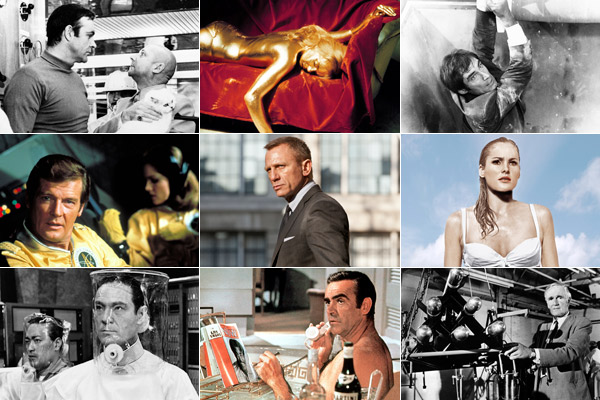
You hardly have to have seen a James Bond movie to know a little bit about 007. He’s one of the most famous fictional spies in the world, and his presence in global pop culture is overwhelming. The way he says, “Bond. James Bond.” The way he takes his martini. The way he rides off into the sunset, usually in a boat, with a different girl every adventure. These Bondian elements are stuck in our pop-culture brains.
For over five decades now, moviegoers have flocked to see the suave secret agent at the rate of one movie almost every other year; the 24th official Bond movie, Spectre, will be released in the U.S. on Nov. 6. To celebrate, we’ve updated our list of 007 facts with all the latest Bond data.
Despite all that fame, a good spy must have some secrets. Not every element of Bondian lore is general knowledge — so we’ve compiled 50 facts to get you ahead of the game.
—Lily Rothman
How to Make a Bond Movie Sexier: Backwards Bikinis

The For Your Eyes Only poster art is one of the most iconic images from 50 years of James Bond movies: a pair of shapely legs, seen from behind, framing Bond in action. (The British version of the poster showed movie scenes on either side of the legs, painted based on a photograph, while the U.S. version went with the original pictures.) The skimpy look was achieved when the photographer, Morgan Kane, asked the model to turn her bikini bottom around and wear it backwards. The bathing suit was so revealing that, in some places, the poster appeared with painted-on shorts covering her derriere.
And whose legs are they? According to a People magazine article from the time, three models claimed the thighs in question: Nancy Stafford, Jane Sumner and Joyce Bartle. (The actress in the movie, Carole Bouquet, did not pose.) It turned out that the arm holding a crossbow, which also appears in the ad, belongs to Sumner but the legs are Bartle’s. —Lily Rothman
Dr. No the Monkey — and Other Bond Animals
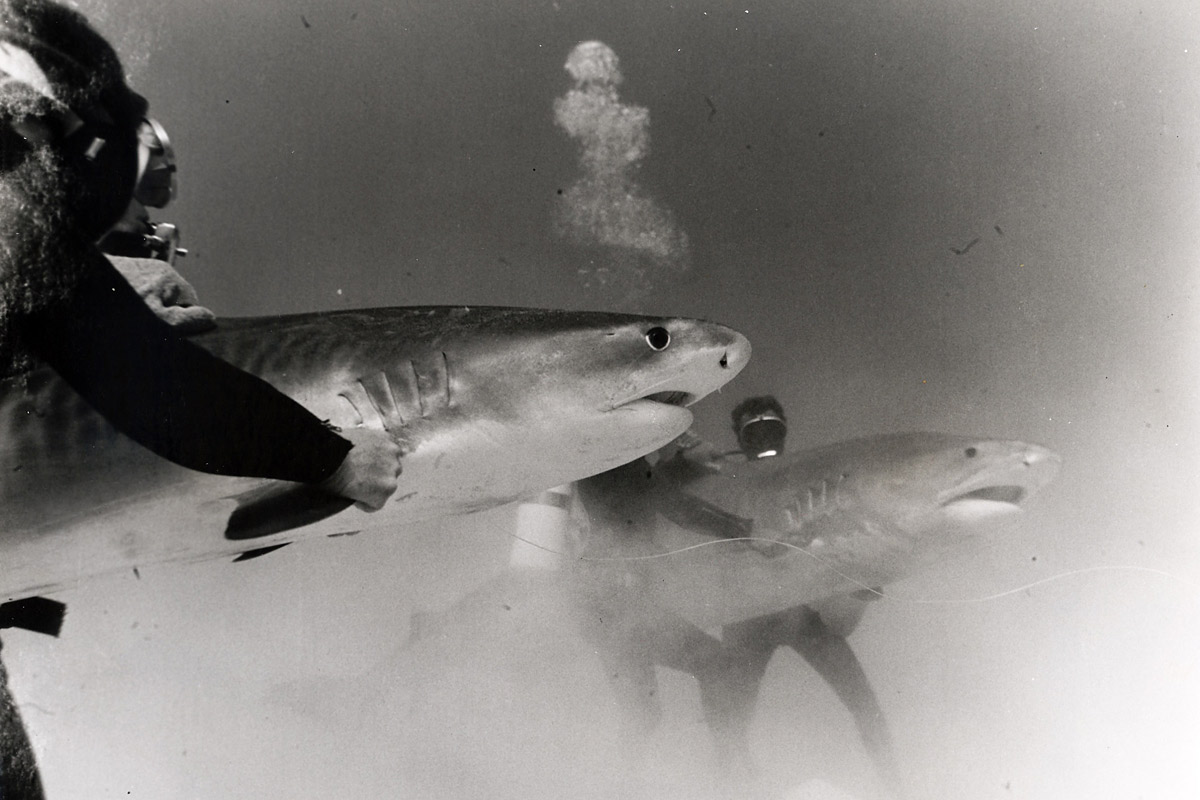
Even though a stuntman (Bill Cummings) played the bad guy who ended up swimming with the sharks in Thunderball, Sean Connery had to perform a similar feat for an important underground fight scene in which he would do his own stunts. The sharks weren’t much danger, though, since they were sedated — or more. The one that looks as if it comes closest to getting a mouthful of Bond was actually a shark corpse pulled along by a crewmember offscreen.
And the peril of shark-swimming is just one example of the dangerous business of working with live animals for a James Bond movie. During the filming of You Only Live Twice, Donald Pleasence, playing the recurring villain Blofeld, had an unfortunate run-in with the character’s signature accessory: the movie’s scary explosions caused Blofeld’s Persian cat to pee on the actor.
One Bondian animal, though, was never seen by audiences: in a first draft of Dr. No, the titular doctor was supposed to be a monkey. —Lily Rothman
Ian Fleming Wrote Bond an Obituary

James Bond forms few real attachments, and that allows him to do his job — but everyone has a family. Fleming originally thought that four Bond books were enough, but his publisher persuaded him to wait until he had written 10 before killing the character — a fake death, it turned out, but one that necessitated an obituary, to be included in the You Only Live Twice novel. Readers learned that Bond’s parents were Andrew Bond, a Scottish man, and a Swiss woman named Monique Delacroix. The elder Mr. Bond worked for a weapons company and brought his family on many business trips; both parents died when the boy was 11. He lived with an aunt in England after that, studied at Eton and Fettes College in Edinburgh, graduated from high school at 17 and was then recruited by the Royal Navy. (Fleming himself studied at Eton and was recruited into naval intelligence.) The world is not enough is the Bond family motto.
And how old was Bond? Depends whom you ask, since he’s always in the prime of life. In the movie Casino Royale, his birthday is given as April 13, 1968 — the same month and day that Casino Royale came out as a novel, and the same year Daniel Craig was born. —Lily Rothman
‘Bond 24’ Isn’t Actually the 24th Bond Movie
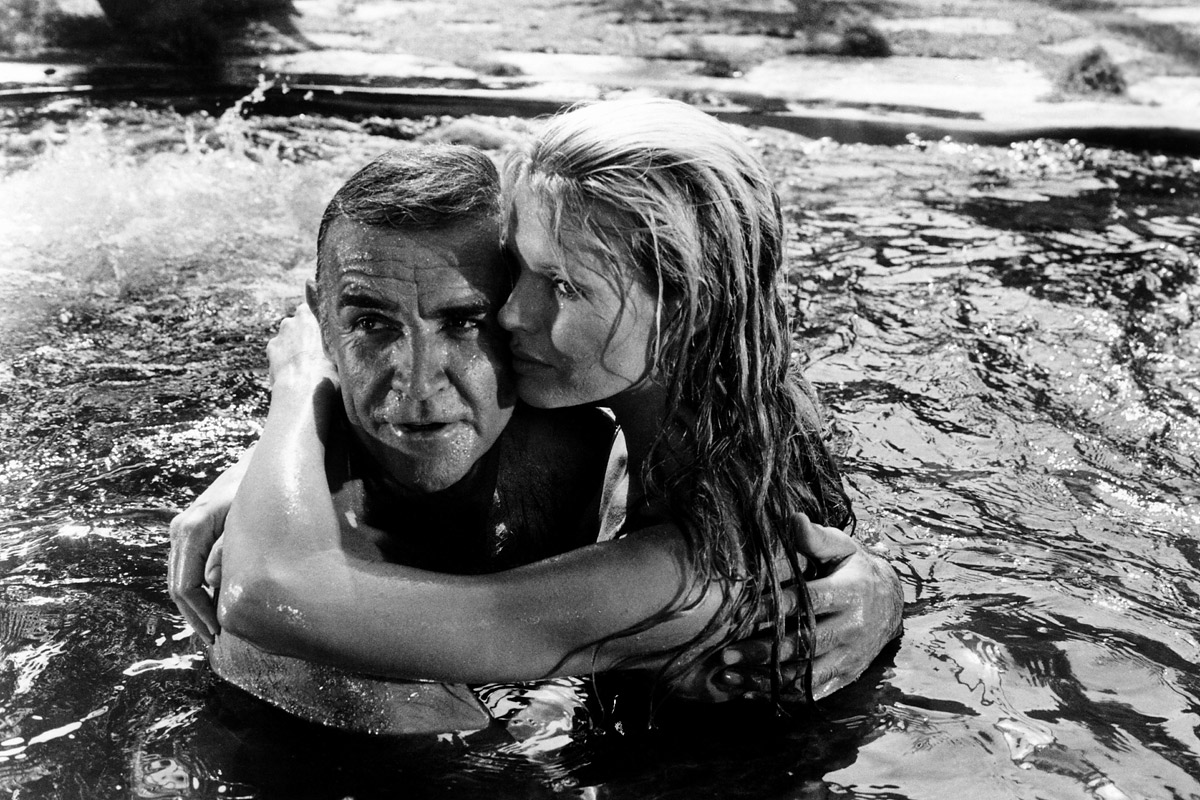
The upcoming Spectre was known as “Bond 24” prior to the announcement of the movie’s name, because it will be the 24th in the series — sort of. In the 53 years from Dr. No to Spectre, 24 James Bond movies will have been released by Eon Productions, the company founded in 1961 by Cubby Broccoli and Harry Saltzman.
That doesn’t mean there haven’t been other movies. Bond first appeared onscreen in a 1954 television version of Casino Royale. Another Casino Royale, a spy-movie spoof, was released in 1967 by a man who had purchased the rights to the book but didn’t want to compete with Eon. It starred Bond girl Ursula Andress, Peter Sellers, Orson Welles and a young Woody Allen as “Jimmy Bond.” Another notable non-Eon Bond movie was 1983’s Sean Connery vehicle and Thunderball copycat Never Say Never Again, which opened just a few months after Octopussy. (For more on the Thunderball–Never Say Never Again controversy, see the next slide.) —Lily Rothman
(PHOTOS: Sean Connery Throughout TIME)
Thunderball Was Almost the First Bond Movie

Dr. No was United Artists’ second choice for the first Bond movie, after Thunderball. The novel had come out recently in 1961, when Eon Productions got the film rights to the Bond books, but the producers’ top pick was embroiled in scandal: a director named Kevin McClory had filed a lawsuit claiming that Fleming had stolen plot points McClory and a screenwriter created for a never-made Bond movie and included them in the book Thunderball. The suit wasn’t resolved until 1963, in a settlement that gave McClory screen rights to the story. The Thunderball movie came to fruition two years later, through an agreement that gave McClory a co-producer role on the Eon Production movie. Still, McClory kept the screen rights to the book — and in 1983, after Sean Connery had spent more than a decade away from the franchise, McClory not only exercised his right to adapt the story but also persuaded Connery to star in it.
With the other Thunderball movie established as a classic by the ’80s, the film would need a new title. Rumor has it the title found itself when Connery’s wife Micheline remarked that he should “never say never again,” now that he was coming back as Bond. —Lily Rothman
Goldfinger Is Played by Two Different Actors

It’s not too unusual for actors to claim they have skills they don’t, figuring they can always learn to ride a horse, shoot a gun or dance the tango if the need arises. But in the case of Goldfinger, a white lie of that variety landed the German actor Gert Fröbe without a voice. When he was approached to play the titular villain, his agent confirmed to the Bond producers that Fröbe spoke English. But as Roger Moore tells it in his book Bond on Bond, Fröbe’s vocabulary was limited to “How do you do? I am very pleased to be here.” The actor Michael Collins ended up voicing all of Goldfinger’s lines, which were then dubbed over Fröbe’s performance. —Lily Rothman
Bond at the Box Office: The Rankings

Which James Bond movie has made the most money in the U.S.? We ran the domestic total gross for each of the first 22 films, according to BoxOfficeMojo.com, through an inflation calculator — and came up with a semiscientific answer:
Thunderball, 1965: $63,595,658; in 2015 = $480,389,487
Goldfinger, 1964: $51,081,062; in 2015 = $392,080,106
Skyfall, 2012: $304,360,277; in 2015 = $315,430,743
You Only Live Twice, 1967: $43,819,547; in 2015 = $312,174,914
Diamonds Are Forever, 1971: $43,819,547; in 2015 = $257,447,953
Moonraker, 1979: $70,308,099; in 2015 = $230,433,342
Die Another Day, 2002: $160,942,139; in 2015 = $212,870,357
Casino Royale, 2006: $167,445,960; in 2015 = $197,633,576
From Russia with Love, 1964: $24,796,765; in 2015 = $190,331,169
Live and Let Die, 1973: $35,377,836; in 2015 = $189,594,125
Quantum of Solace, 2008: $168,368,427; in 2015 = $186,074,627
Tomorrow Never Dies, 1997: $125,304,276; in 2015 = $185,766,517
The Spy Who Loved Me, 1977: $46,838,673; in 2015 = $183,911,354
The World Is Not Enough, 1999: $126,943,684; in 2015 = $181,306,212
GoldenEye, 1995: $106,429,941; in 2015 = $166,171,078
Octopussy, 1983: $67,893,619; in 2015 = $162,198,265
On Her Majesty’s Secret Service, 1969: $22,774,493; in 2015 = $147,658,767
For Your Eyes Only, 1981: $54,812,802; in 2015 = $143,481,102
Dr. No, 1963: $16,067,035; in 2015 = $124,936,949
A View to a Kill, 1985: $50,327,960; in 2015 = $111,294,484
The Living Daylights, 1987: $51,185,897; in 2015 = $107,213,277
The Man with the Golden Gun, 1974: $20,972,000; in 2015 = $101,220,741
Licence to Kill, 1989: $34,667,015; in 2015 = $66,522,926
More like Licence to Flop, amirite?
—Lily Rothman
(MORE: TIME’s 1965 take on “Bondomania”)
GoldenEye Isn’t Just a Movie Title
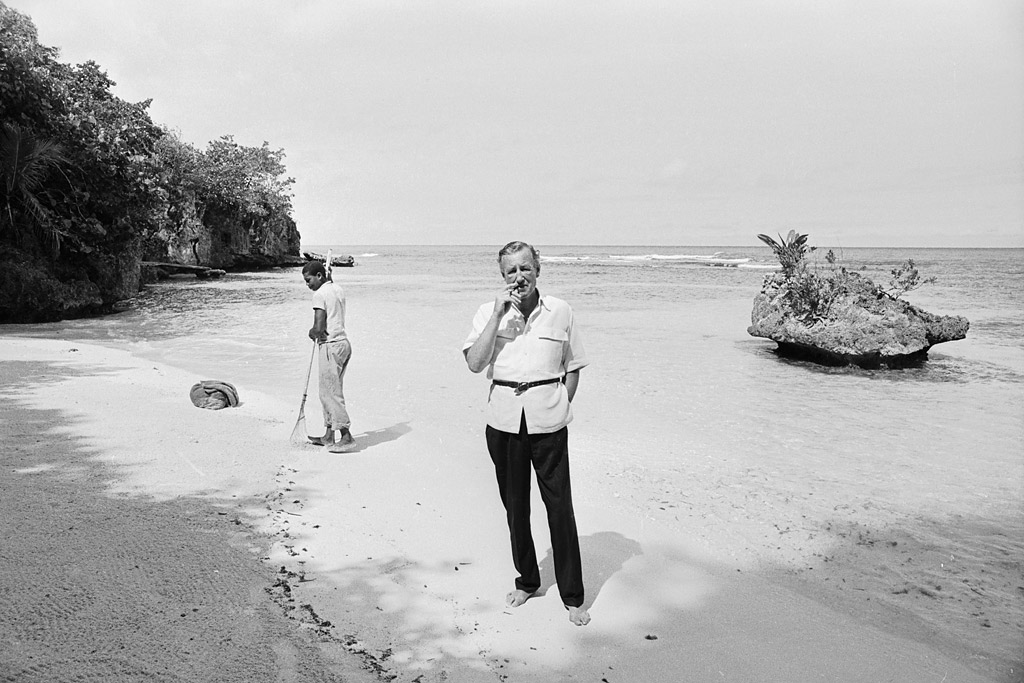
Ian Fleming fell in love with Jamaica (“as I suppose any Scotsman would,” he once said) on a trip to the island during World War II. After the war, he bought a large plot of land on a coral bluff. He called the place Goldeneye, claiming a number of origins for the name of the estate, including Carson McCullers’ Reflections in a Golden Eye and Operation Goldeneye, a plan he developed during World War II in case of a Nazi invasion of Gibraltar. Whatever the inspiration, Fleming found his own there: he created James Bond on the island — writing many of his 14 novels in a home he built overlooking the Caribbean.
After Fleming’s death, the estate was sold to Bob Marley. A year later, Marley sold it to Chris Blackwell, the founder of Island Records. The 17th Bond film, Pierce Brosnan’s first, took its name from the idyllic locale. —Stephanie Abrahams
From Sex to Hippies to Fuel Crises: Bond Movies and History
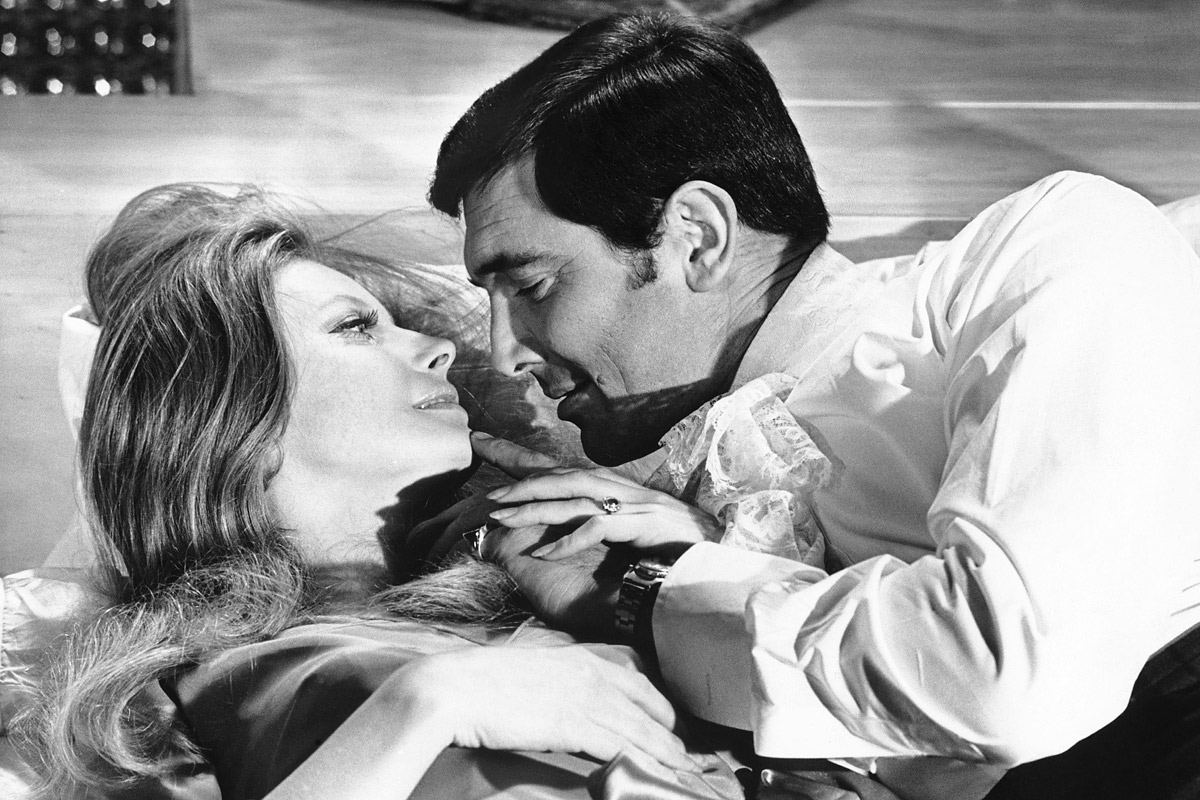
James Bond movies aren’t quite historical fiction — we’re pretty darn sure Moonraker is made up, at the very least — but that doesn’t mean they exist outside of history. For example:
But perhaps the biggest connection between Bond movies and history is something that’s harder to pin to one moment: Bond is both a product and a harbinger of the sexual revolution. He and the women he meets engage in casual sex without moral consequences (even if the women have a tendency to become targets for Bond’s opponents). Bond girls dress provocatively and are confident in doing so. Playboy and the Bond novels are the same age, and Hugh Hefner, a fan, published an Ian Fleming short story in the magazine in 1960. —Lily Rothman
The Bond-Broccoli Connection
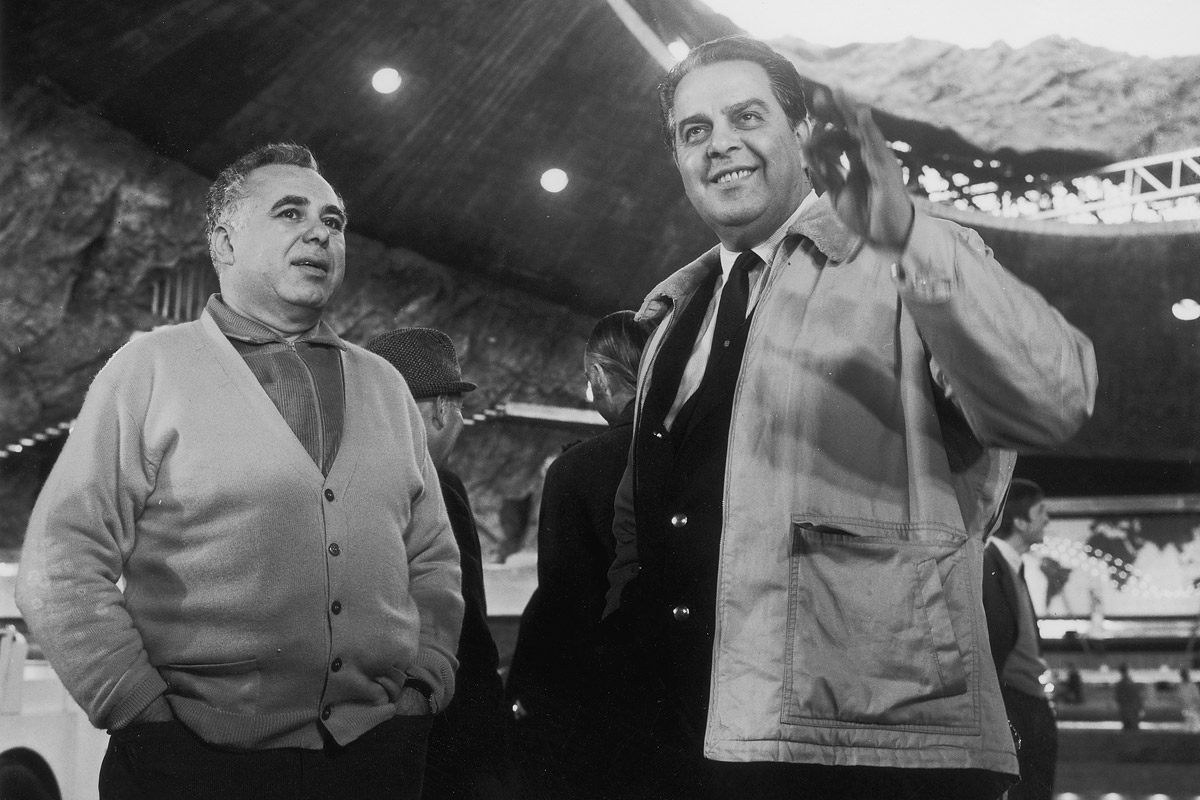
Albert Broccoli, known as Cubby, was a producer of 17 James Bond films — but one of the most interesting things about him has nothing to do with Bond. Broccoli (1909–1996) got started in the film business as a mailroom worker at Twentieth Century Fox and eventually, after serving in World War II, formed his own production company. He and co-producer Harry Saltzman, who had an option on the film rights to the Bond movies, founded Eon Productions, the company that would make all of the “official” Bond films, in 1961. But, before all that, Broccoli worked on the family farm where he grew up. And yes, that’s Broccoli as in broccoli: according to family lore, Cubby’s uncle brought the first broccoli to America around 1870. —Lily Rothman
Ursula Andress Helped Make Her Famous White Bikini
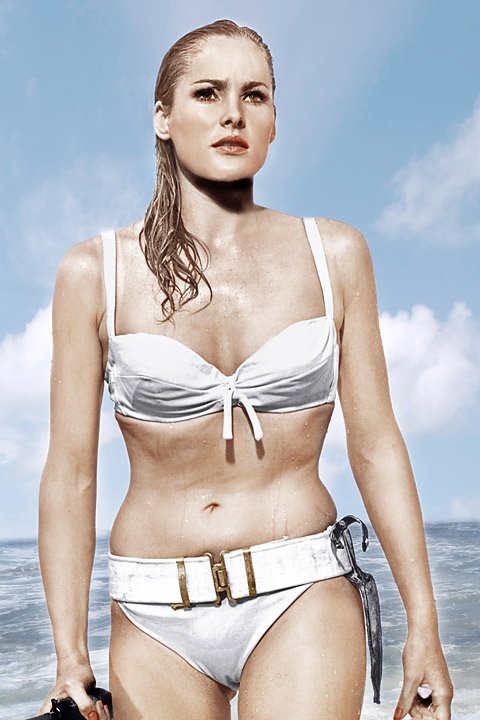
Ursula Andress set a precedent for Bond Girl sexiness that has lasted more than a half-century when, playing Honey Ryder, she emerged from the sea in Dr. No. But the famous white cotton bikini she dons didn’t fit her like a glove by chance. Andress herself worked with costumer Tessa Prendergast Welborn to sew one that fit just right. A knock-off white bikini appeared on a Playboy cover model, Cynthia Maddox, in 1964.
(MORE: Designing 007: James Bond’s Style Celebrated in Major New London Exhibit)
Years later, after the Swiss actress found the bikini in her attic, according to the BBC, she put the item up for auction. It was predicted to take in £50,000, in a Bond-themed auction at Christie’s in London on Feb. 14, 2001, but sold for a bit less than that—£35,000 before taxes (a bit more than $50,000 at the time). The winner of the auction was Robert Earl, co-founder of Planet Hollywood.
—Lily Rothman
The Bond Theme Was Originally Written for a Stage Musical
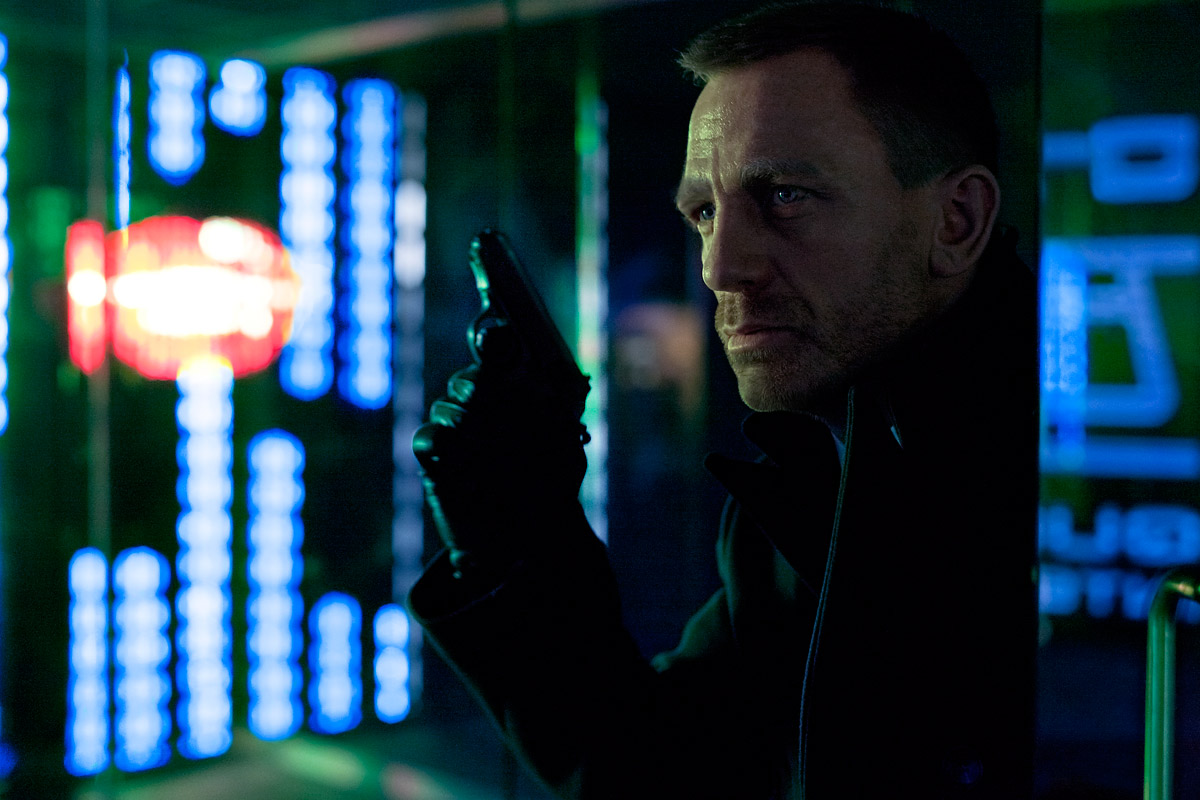
The James Bond theme music is now iconic, but that famous “dun duh duh dun duh duh duh” almost ended up in a different movie. Tony-nominated composer Monty Norman, who did the score for Dr. No, wrote some original Caribbean-inspired tracks that would appear in the movie — but for the famous intro theme, he turned to a piece of music he had already written, a snippet from a musical-theater adaptation of the V.S. Naipaul novel A House for Mr. Biswas. The song didn’t make it into the Mr. Biswas play, so Norman decided to turn it into the Bond theme by adding electric guitar and a funkier sound, as arranged by John Barry. Barry’s orchestra recording of the song became the well-known version — even though Barry was paid only £200 for his work. —Lily Rothman
(MORE: The Art (and Business) of the James Bond Theme Song)
Why M Goes by an Initial
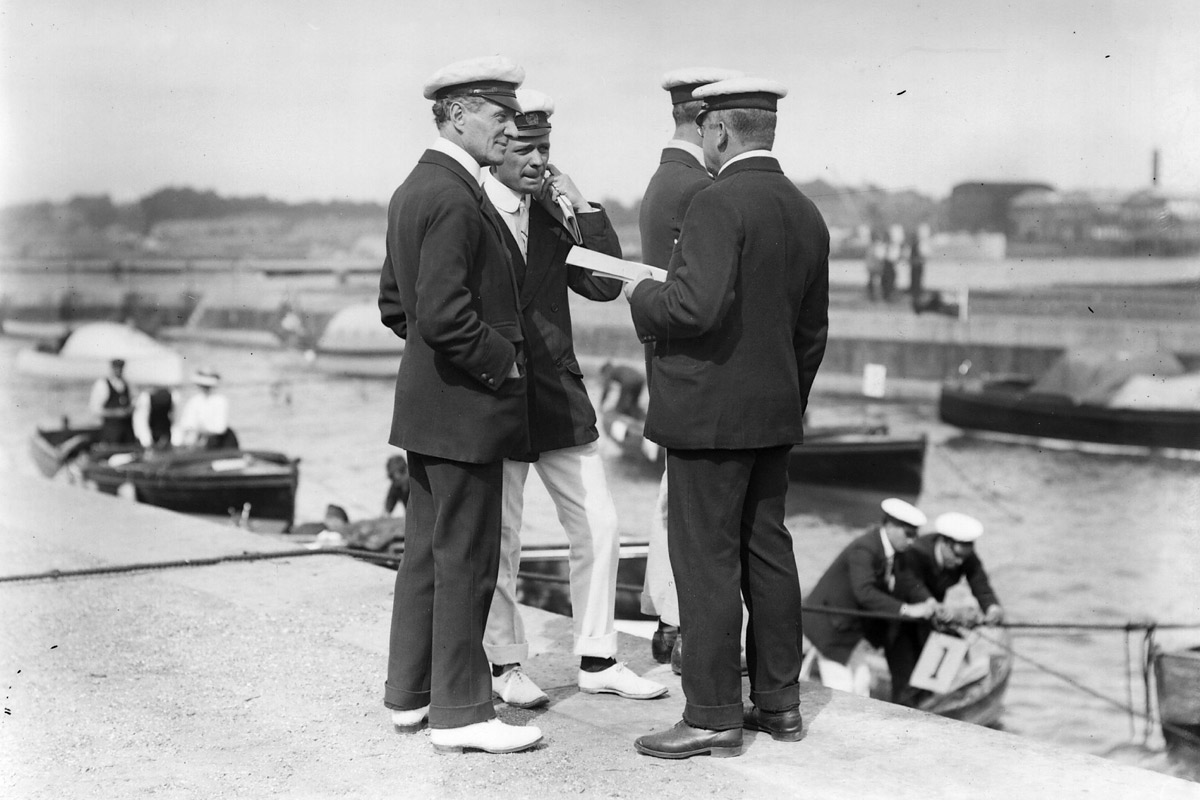
James Bond’s boss, M, director of the British Secret Service, has been played (in the Eon Bond movies) by Bernard Lee, Robert Brown and Judi Dench. But there’s another individual who has also contributed to M’s development over the past 53 years: real-life naval-intelligence officer Sir Mansfield Smith-Cumming, who is the inspiration for M’s being referred to by a single initial. (More on the inspiration for the character here.) In 1909, Smith-Cumming was a founder of Britain’s Secret Service Bureau. He was well known for initialing documents with the letter “C”. After his death, the letter came to stand for “chief,” and other Secret Service heads used it too. And what’s M’s full fictional name? According to the novel The Man with the Golden Gun, M is Sir Miles Messervy, a retired vice admiral and knight commander of the Order of St. Michael and St. George. —Lily Rothman
One Set Element in You Only Live Twice Cost More Than All of Dr. No

No name is more synonymous with the look of the Bond films than Ken Adam. The production designer started making his signature futuristic sets with the very first Bond film, Dr. No. Fans can also see his handiwork in The Spy Who Loved Me — where he conceived the huge Liparus set — and You Only Live Twice. In that film, Adam built Blofeld’s spectacular volcano headquarters for Bond’s climactic battle against the SPECTRE organization. Ian Fleming’s novel originally had Blofeld stationed at a castle on the Japanese coastline. But since there were no castles along the water in Japan (typhoons!), producers changed his headquarters to the inside of an extinct volcano, which was constructed on an outdoor lot at Pinewood Studios for a cool $1 million — more than the entire production budget of Dr. No.
Adam was behind the inside of Drax’s orbiting space station for Moonraker, as well — a three-story set requiring the work of 220 technicians using 100 tons of metal, two tons of nails and 10,000 feet of wood. —Stephanie Abrahams
Solid Gold Factoids

Gold must be James Bond’s favorite element: it appears in the titles of three Bond movies. So here are some gold-plated Bond facts for you to take a shine to:
—Lily Rothman
One Actress Almost Died to Be a Bond Girl

The Japanese government would permit on-location filming of You Only Live Twice only if Japanese actresses played the main female roles in the movie — but one of the actresses chosen to do so almost died before filming began. Mie Hama was selected to play Kissy Suzuki and given just a few months to go abroad and learn English. Although the other actress, Akiko Wakabayashi (who played the character Aki), mastered the language, Hama struggled. The producers decided that she ought to go back to Japan and that the producers would select another actress to play the part.
However, when they broke the news to her, Hama threatened to jump from a window at the Dorchester Hotel and kill herself. The producers decided not to test her resolve — they let her continue with filming. —Lily Rothman
The First Tie-In Was Censored in the U.S.

Ah, the movie tie-in … Every successful film franchise has some authorized products to shill, but the marketing folks in charge of Dr. No started slow. To coincide with the release of the first Bond film, they issued a paperback edition of Ian Fleming’s novel, a soundtrack album, a 45-rpm single of the Bond theme — and a comic-book adaptation of the screenplay. The 32-page comic follows the film’s plot, except for a few key differences: Professor Dent tries to shoot James Bond before he’s killed, and Dr. No is electrocuted in the comic instead of drowned. The U.S. comic was censored to delete all racial skin color and dialogue thought to be offensive. —Stephanie Abrahams
The Real Bond, James Bond
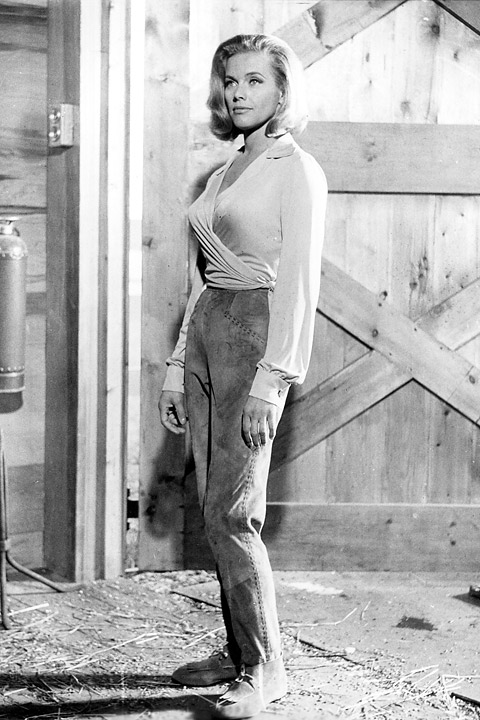
There was a real James Bond — but not who you’d think. James Bond was an American ornithologist, author of Field Guide to Birds of the West Indies. That Bond’s claim to fame was the discovery that Caribbean birds flew south from colder climates to get there, not north from South America. Fleming said that he chose the name because it was manly, unromantic and short — but he later wrote a letter to the ornithology-Bond family offering them unlimited use of the name Ian Fleming (and suggested it would be a good name for an especially ugly new bird species).
Other Bond characters who share names with real-world people include Pussy Galore (named for a notorious brothel operator from upstate New York) and Dr. Kanaga, the Live and Let Die villain (named for Ross Kanaga, who owned the crocodiles with whom Bond faces off — and who even served as a stunt double for some croc scenes). —Lily Rothman
The 300-Year-Old Title: You Only Live Twice
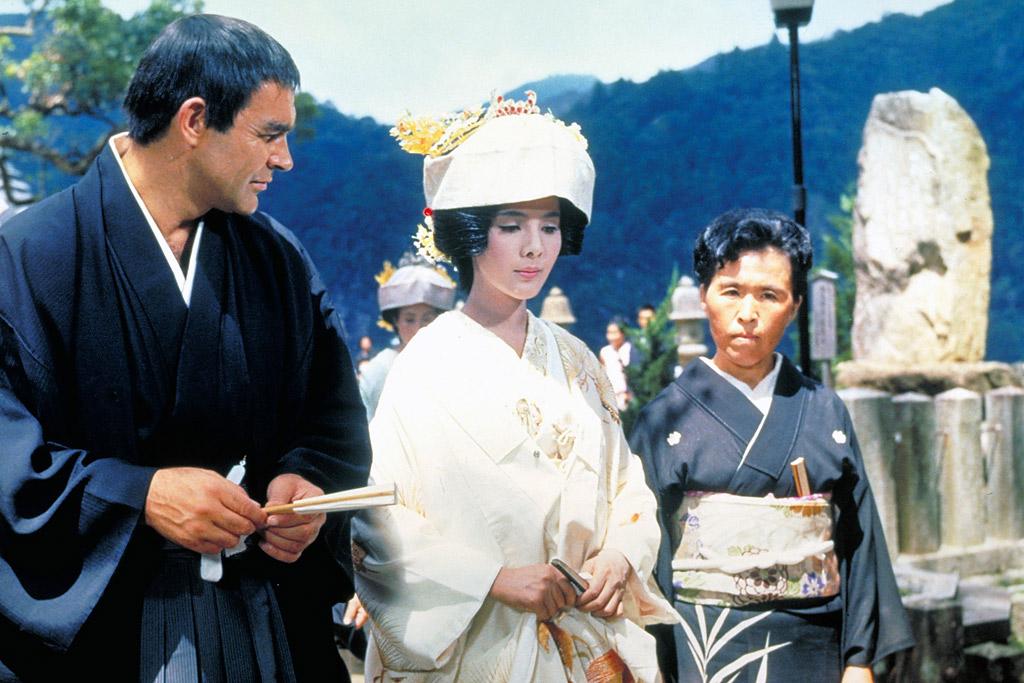
The 17th century Japanese poet Matsuo Basho wrote those words more than 300 years before Ian Fleming was inspired by them — and used them as the title of his 12th novel. (Fleming also used the verse in a haiku Bond writes to his friend Tiger Tanaka in the novel.) The book did indeed get a second life as a film in 1967. By that time, Bond had become such a lucrative franchise that producers were able to claim the then astronomical budget of $9.5 million — nearly as much as the budgets of the first four films combined. —Stephanie Abrahams
A Literal Gold Finger Exists
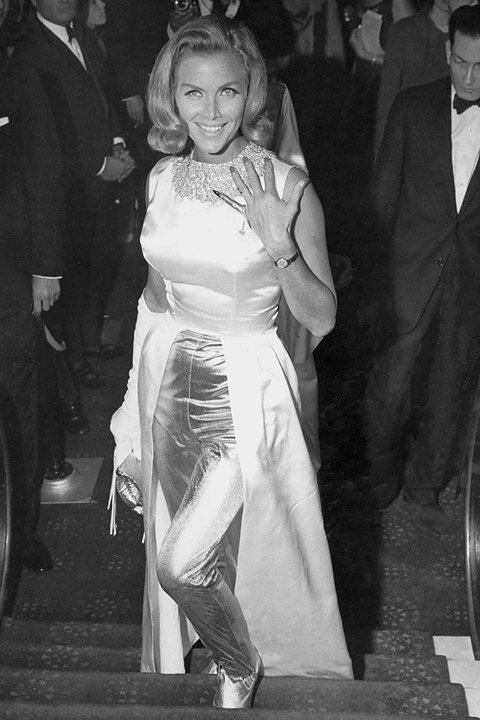
Goldfinger was expected to be a blockbuster, and the movie’s team wanted to give it a winning introduction. For the London world premiere, on Sept. 17, 1964, they spared no expense. The film reels arrived in gold canisters. Co-star Honor Blackman, who played Pussy Galore, wore a 22-carat gold finger — a pinkie adornment that cost £10,000 and also bore a large diamond. American premiere-goers didn’t get left out either. For the New York event, on Dec. 21, the Aston Martin from the movie was sent via ocean liner, and was accompanied by a motorcade of Aston Martins. The eight other cars belonged to local luxury-car enthusiasts; United Artists had asked every person in New York who owned an Aston Martin DB5 to participate. —Lily Rothman
A Bond Spoof Inspired a Mob Riot

The 1967 Casino Royale spoof may not be a very well-remembered moment in Bond-movie history, but it bears a peculiar distinction: in May 1967, the spy-flick parody incited a mob riot. Boston radio station WRKO sponsored a 4 a.m. screening at the Sack Savoy Theater, with free admission — and snacks — for folks in the typical spy gear of a trench coat. When people began to queue hours in advance, the theater decided to run the screening at 2 a.m. instead of 4. The crowd did not take the news well.
The New York Times reported that morning that the moviegoers numbered in the thousands (between 8,000 and 15,000) and that every Boston police officer available was needed to calm the crowd. About 30 people were hurt, including two reporters, and 15 arrests were made. Two fires began inside the theater, and the extinguishing effort soaked the audience. But, for fear of what might happen otherwise, the show went on. —Lily Rothman
Bond Girls: Movies vs. Books
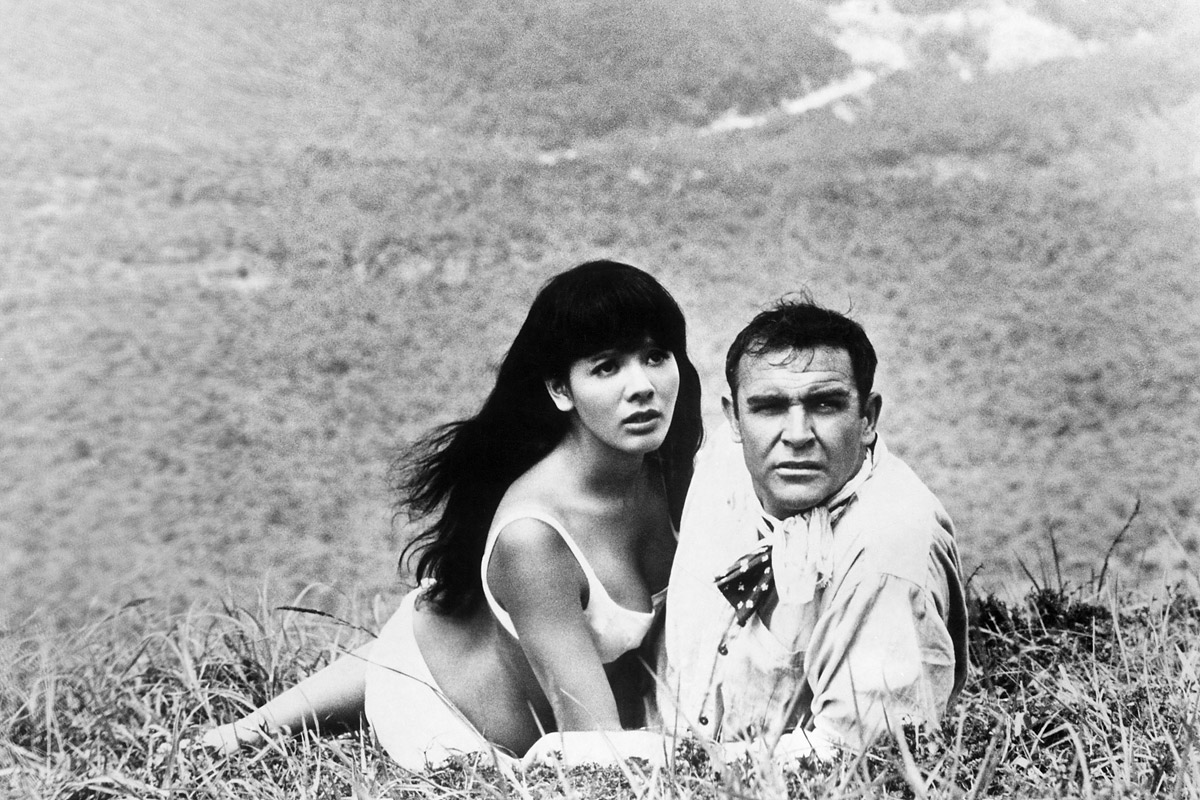
Are the Bond movies better than the books on which they’re based? That’s not just a matter of opinion; it’s nearly apples and oranges. What we can say for sure is that they’re different. Take the women of James Bond, for example. Even in the movies based directly on Fleming novels, the Bond Girls have a tendency to mutate during adaptation. The changes start at the beginning: in the novel Dr. No, Honey Ryder’s full name is Honeychile Ryder. But that’s just a small difference compared with what would come later: In Goldfinger the book, Pussy Galore was an American gang leader (in charge of the Cement Mixers, a group of lesbian burglars) rather than an English aerial-acrobatics expert. And in the book version of You Only Live Twice, Kissy Suzuki and James Bond actually conceive a child, even though she keeps it a secret from him. —Lily Rothman
That Famous Gun Barrel Was a Price-Tag Sticker

Sometimes the things that go down in history are the product of lots of hard work — and sometimes they are the result of a moment of genius. The gun-barrel sequence that opens Bond movies is closer to the latter. Maurice Binder, the title designer who worked on most Bond movies from Dr. No to Licence to Kill, happened to have some circular white stickers — meant to be price tags — and thought they would be a good stand-in for gunshot holes. So in about 20 minutes, he put together a mock-up of the white circles transitioning into the view through a gun barrel. The filming took a few hours, with Sean Connery’s body double (Bob Simmons) and a real gun barrel, belonging to a prop-shop gun that was taken apart and filmed through with a pinhole camera. The sequence was later reshot with Connery. —Lily Rothman
James Bond Does Have a True Love

James Bond is famous as a ladies’ man — emphasis on the plural. He’s usually got a few women waiting in the wings (if they’re not dead already). But that doesn’t mean 007 doesn’t know true love. In the 1969 film On Her Majesty’s Secret Service, Bond meets Teresa Di Vicenzo (played by Diana Rigg) when he prevents her from committing suicide and then covers her casino debts. Teresa, who goes by Tracy, is the child of a crime boss, and she knows how to stand up for herself, eventually returning the favor and rescuing Bond from the bad guys, after which he proposes and they marry. Even though her wedding outfit looks like the traditional white gown from a distance, she’s actually wearing a pantsuit with cutouts. But Tracy doesn’t make it to any other Bond movies except as a headstone in For Your Eyes Only: she’s shot dead as the Bonds leave for a honeymoon.
The movie’s Bond, George Lazenby, decided not to reprise the role, and the fall-out from that surprise threw off the normal Bond merchandising machine. Because fewer collectibles were created and sold, they can be very valuable today. A long-lost merchandise tie-in wedding ring — a replica of Tracy’s, which bears the motto “We have all the time in the world” — is considered the holy grail of Bond souvenirs by some collectors. —Lily Rothman
Four Non-Bonds
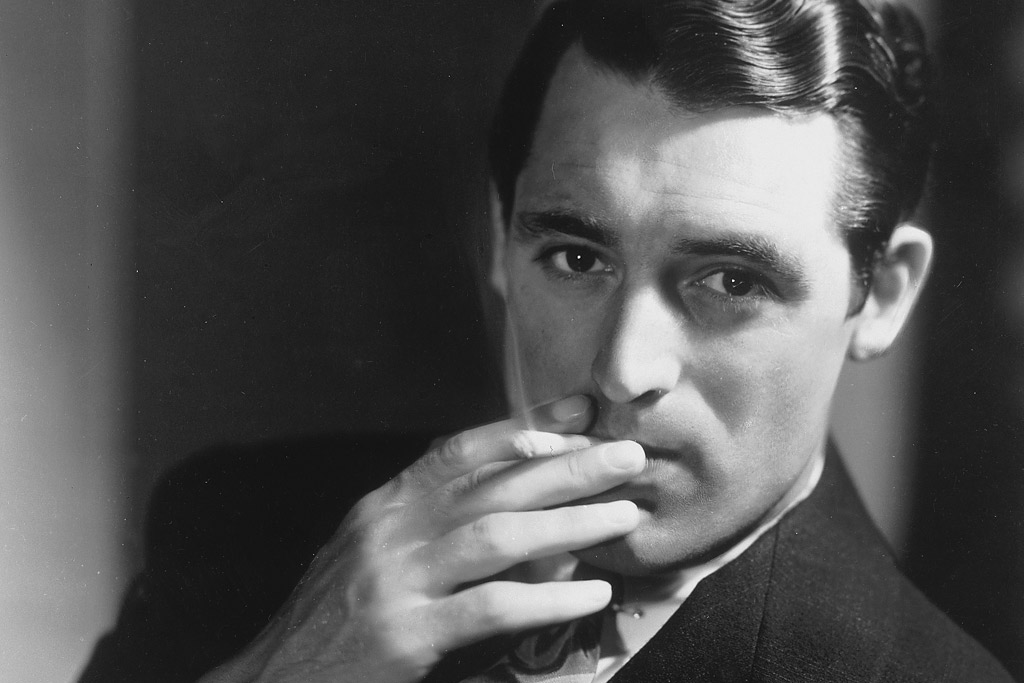
The men who have portrayed James Bond — Sean Connery, George Lazenby, Roger Moore, Timothy Dalton, Pierce Brosnan and Daniel Craig — have each brought their own style to the role, but Bond could have had another leading man. Before Dr. No, a casting contest was launched to find a man age 28 to 35, weighing about 170 lb. and about 6 ft. tall, with light eyes, dark hair, a strong chin and a British accent. The contest turned up a model-actor named Peter Anthony — but it turned out he was more the first than the second, so the producers opted for a real actor. Other almost-Bonds included Cary Grant and Richard Burton before the role went to Connery. More recently, Hugh Jackman turned down the role that went to Daniel Craig in Casino Royale. —Lily Rothman
James Bond Almost Had Plastic Surgery

After five Bond movies, Sean Connery had had enough: he announced in 1966 that he was done with the role. He would eventually return to it, but the producers of On Her Majesty’s Secret Service would need to replace him. The process through which they found George Lazenby was documented by LIFE magazine, and the photos from five actors’ auditions can be seen online here.
But how to explain the new face within the film? Although it was eventually decided that Bond would just be Bond and audiences would have to adjust — which they did just fine — that was not a foregone conclusion. In early discussions of how to handle the switch for OHMSS, it looked as if Bond would opt for plastic surgery, with the intent of throwing his enemies off his scent. —Lily Rothman
Sean Connery’s Salary Made the Guinness World Records
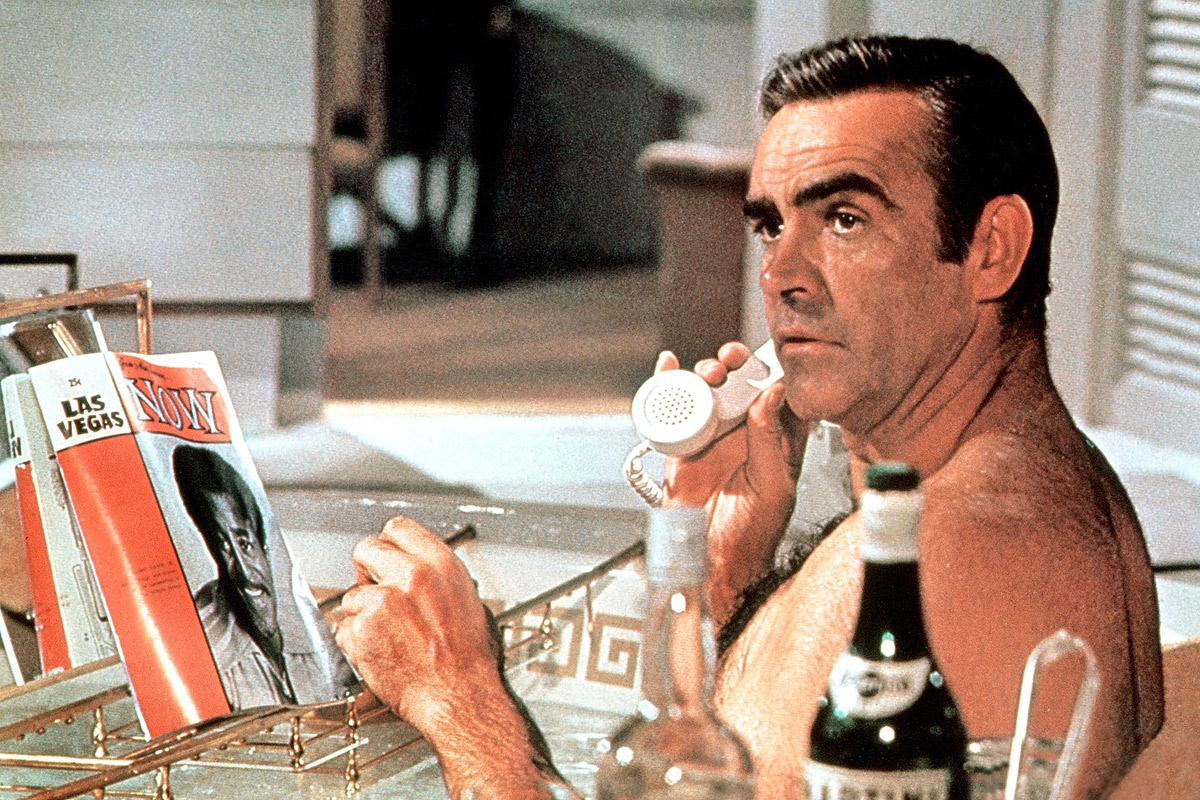
Why did Sean Connery return to the role of James Bond after George Lazenby’s run in On Her Majesty’s Secret Service? After all, he had fought with the producers over the years and was trying to establish himself as someone who could do non-Bond jobs. Plus, actor John Gavin — who had appeared in Psycho, Spartacus and a spy-sploitation movie called OSS 117 – Double Agent — was all set to play Bond. But Gavin, a lesser-known American, didn’t fly with the president of United Artists.
We can’t know for sure what convinced Connery to do Diamonds Are Forever, but we can guess: Connery’s sweetheart deal included back-end percentages (12.5% of gross), a bonus if the shoot went longer than scheduled, contractual freedom from having to even talk to the producers with whom he was feuding, a contract from U.A. for two nonfranchise movies that he would choose and a salary so big it made the Guinness World Records. It seems small today, but his $1.25 million-dollar paycheck was massive for the time. Connery went on to donate that money to the Scottish International Education Trust, a charity he founded. —Lily Rothman
More Actors Have Played Blofeld Than Bond
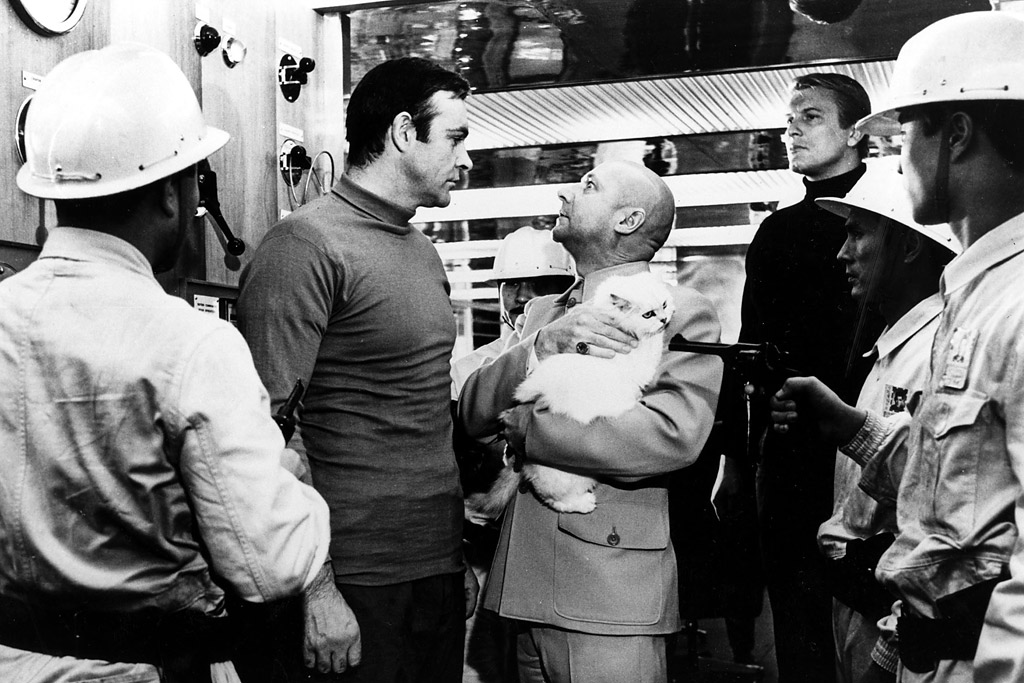
Not that there’s any villain who can match James Bond — but if there were, it would be Ernst Stavro Blofeld, inspiration to cat-stroking villains everywhere. Blofeld runs SPECTRE (Special Executive for Counterintelligence, Terrorism, Revenge and Extortion), the organized-crime/terrorism group out to get Bond. Blofeld first shows up in the Thunderball novel, where Fleming gave him the birthday of 5/28/1908 and the background story that he was a Polish-born government worker who sold secrets in the years around WWII.
Blofeld’s looks continually changed throughout the Bond films. His face is never seen in From Russia with Love, when he and his cat make their first onscreen appearances, and it’s shown to Thunderball viewers only for a moment. When Blofeld is seen in full, his hair, eyes and scarring vary from movie to movie. Unlike with Bond, the changes get an explanation: massive plastic surgery, according to Diamonds Are Forever. Of course, a more literal reason for his changing looks is that Blofeld has been played by more actors than Bond has: seven in total since From Russia with Love, Thunderball and For Your Eyes Only all have two different people portraying the badass baldie — one for his voice and one for his body.
In Spectre, Christoph Waltz plays Franz Oberhauser, a mysterious figure within the villainous organization who shares a personal connection with Bond. However, there has been much speculation that Waltz’s character will actually turn out to Blofeld. —Lily Rothman and Megan McCluskey
James Bond Island is a Real Place
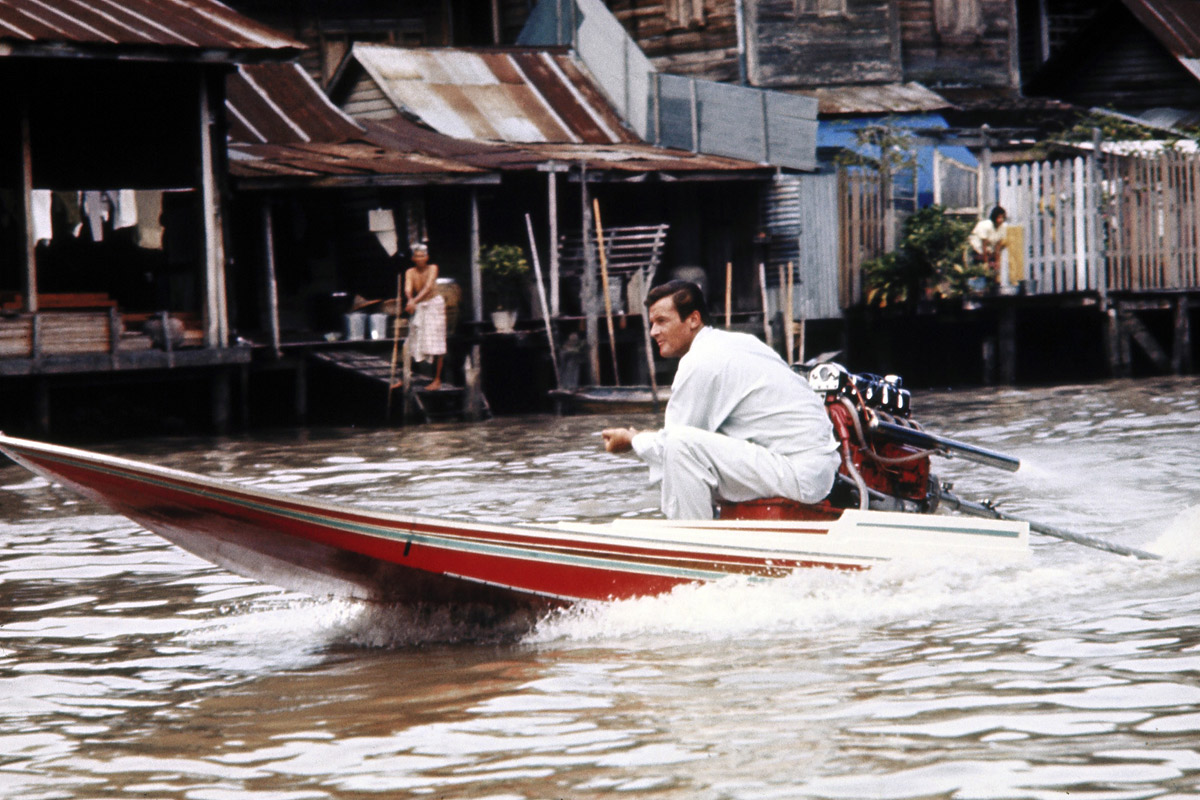
Phuket, Thailand, is now a major Southeast-Asian tourist destination, but when 1974’s The Man with the Golden Gun was filming on location, the area was remote and isolated. The movie’s villain, Scaramanga, had his HQ in the village of Phang Nga, at Phang Nga Bay on the island known as Koh Tapu in Phuket—a place that required the crew to pass through pirate-inhabited waters to reach it. But the island’s isolation didn’t last long after the movie came out. These days, the island is better known as James Bond Island and is a major tourist attraction.
Another piece of Golden Gun lore is that because filming was in Thailand, producer Harry Saltzman thought there should be elephants in the movie, preferably in an elephant chase scene. Because elephants have to wear protective shoes to walk on hard surfaces, which might have been required during filming, Saltzman ordered the necessary footwear. Later, when Cubby Broccoli, another producer, was on set, he was presented with about 2,000 pairs of elephant shoes that had been ordered for the shoot months before — even though, by that point, the elephants had been cut out of the script. —Lily Rothman
Bond of Brothers
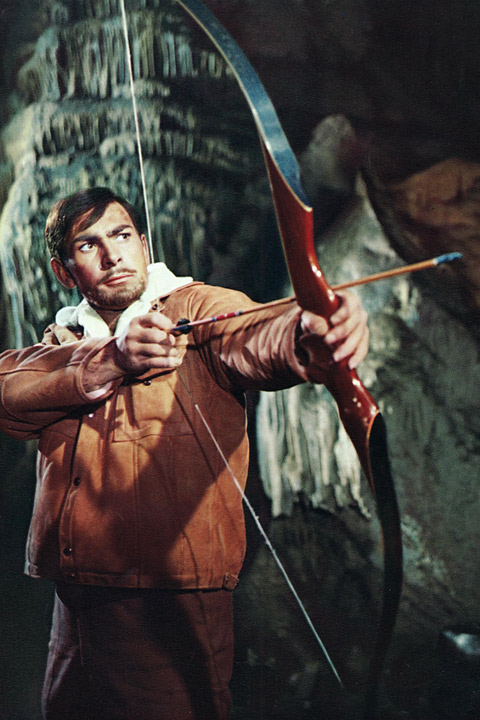
Think Sean Connery is the only spy-movie star in his family? Think again. Sean’s younger brother Neil Connery also had a bit of an acting career. He made his film debut in 1967, as a character named — yes — Dr. Neil Connery, in a movie called Operation Kid Brother, an Italian spoof of the genre his brother made famous. The original title was even less subtle: OK Connery. In the film, Dr. Connery, a plastic surgeon, is drawn into his brother’s secret-agent lifestyle. The best place to see Operation Kid Brother these days may be in its appearance on an episode of Mystery Science Theater 3000, the cult-classic show that provides mocking movie commentary. —Lily Rothman
Roald Dahl and Kingsley Amis Both Wrote for Bond
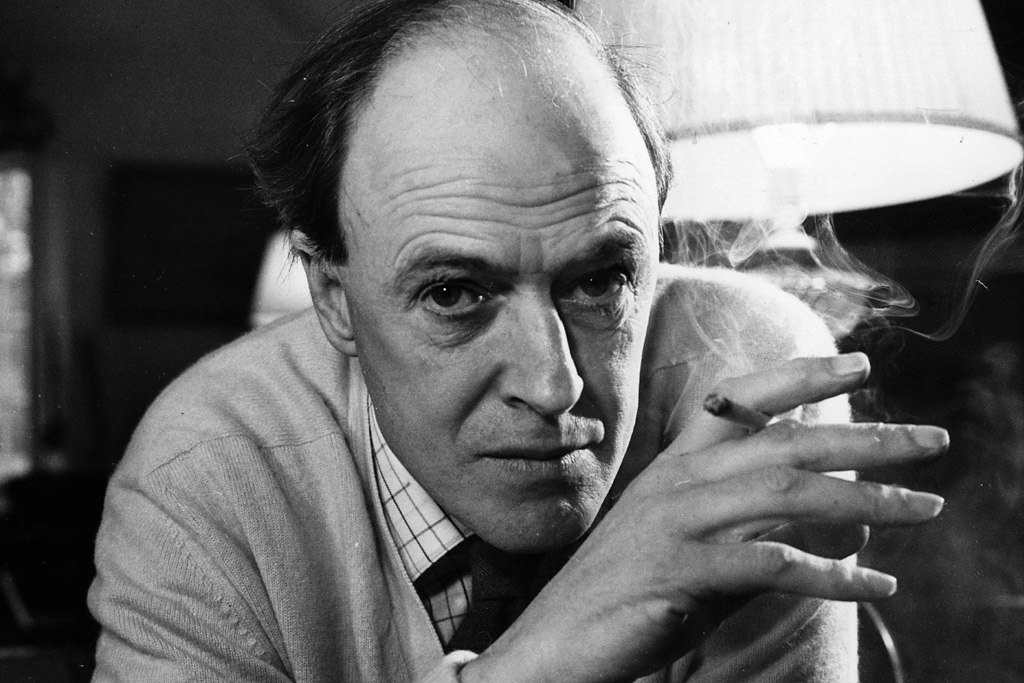
Ian Fleming is without a doubt the writer who lays claim to James Bond. Fleming invented him, after all. But that doesn’t mean other famous writers haven’t had a hand in crafting the character over the years. Fleming died in 1964, just a few months before The Man with the Golden Gun was published. Kingsley Amis, under the pseudonymn Robert Markham, stepped in to write the first non-Fleming Bond book, 1968’s Colonel Sun. Roald Dahl, of James and the Giant Peach and Charlie and the Chocolate Factory fame, wrote the script for You Only Live Twice — though he ignored the plot of the Fleming novel of the same name. —Lily Rothman
Moonraker Was Made Because of Star Wars
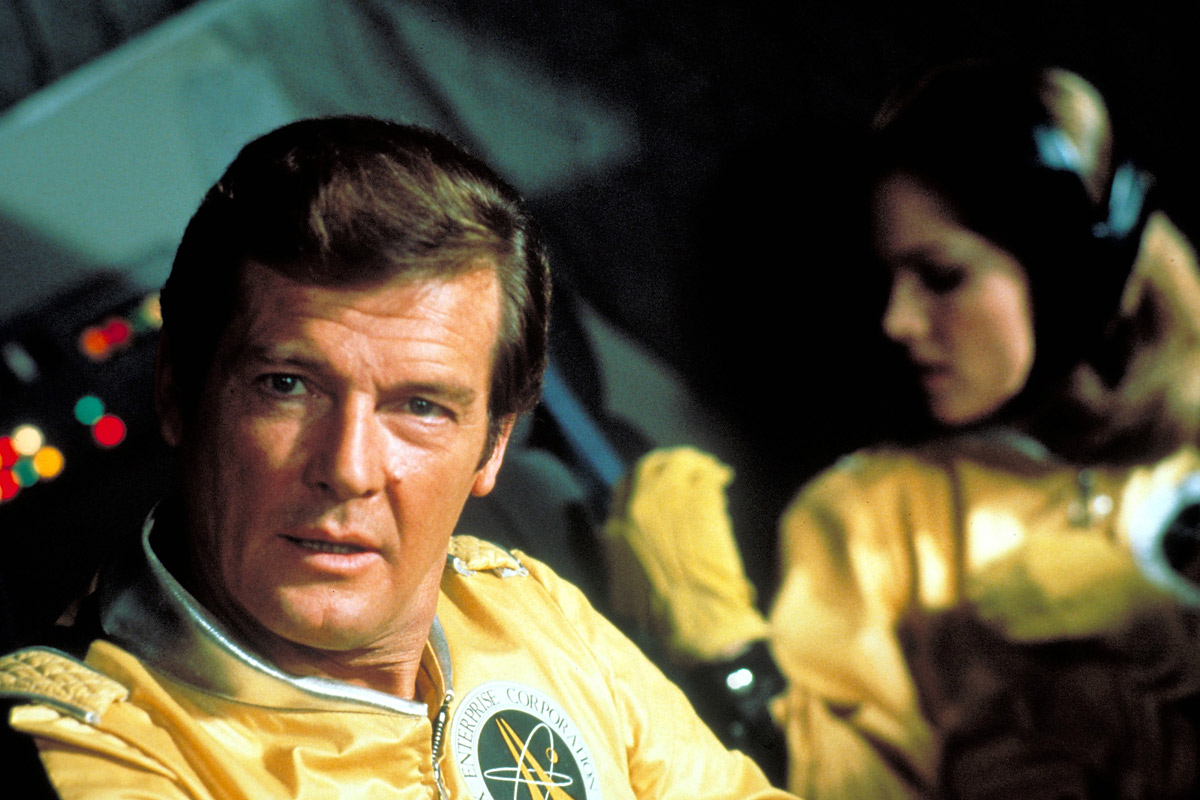
By the time The Spy Who Loved Me came out in 1977, audiences had come to expect a constant stream of new Bond movies. So, in the end credits, the producers touted their next release: For Your Eyes Only. But even after that promise was made to moviegoers, it didn’t happen. What happened was Star Wars. The success of the 1977 space epic encouraged the Bond machine to turn its attention away from Earth-bound adventures. The result? In 1979 the world got Moonraker, whose creators hoped the space-centric movie would be a zeitgeist-y hit. (For Your Eyes Only was postponed until 1981.) In order to make Moonraker seem more feasible (and thus Bond-like) than Star Wars — besides the obvious involvement of spies rather than Jedi — the producers consulted with NASA and even planned to premiere the film in Houston, near Mission Control, the week of the 1981 space-shuttle launch. Technical issues delayed the shuttle, though, so the movie bowed in London instead. —Lily Rothman
Don’t Believe (For) Your Eyes (Only)
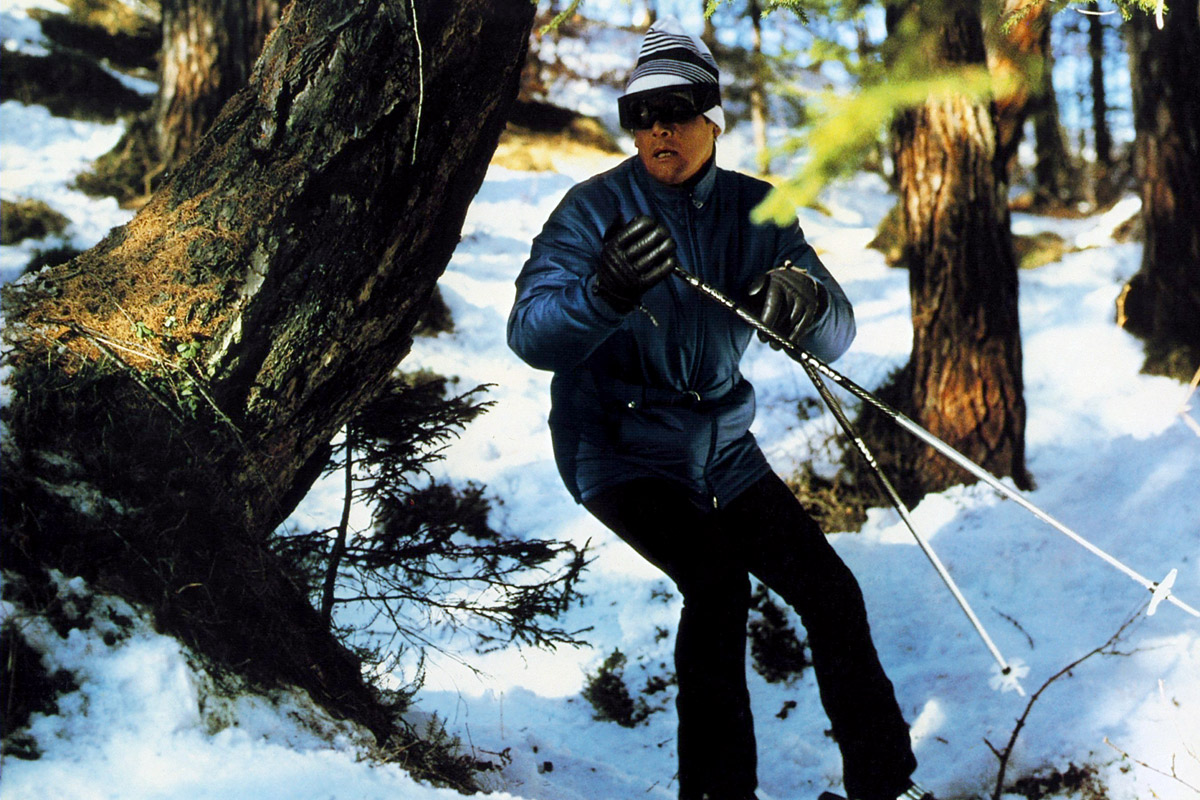
The exotic locations are perhaps the second most important character in any Bond movie, and hopes to shoot in interesting places have even determined some of the movie’s plots. But locations don’t always cooperate. In For Your Eyes Only, the big ski scene was shot in Cortina d’Ampezzo, Italy, in the Alps — but in 1980–81, when filming took place, there was no snow in that region. The powder on the town’s streets was trucked in from elsewhere. (And sometimes it’s the actors who don’t cooperate: For Your Eyes Only also has an underwater scene, but actress Carole Bouquet didn’t think she was a strong enough swimmer to do that part; instead it was filmed on dry land, and the bubbles that make it look like water were added later.)
In 2012, history repeated itself: the owner of Duntrune Castle in Scotland, where a scene in Skyfall takes place, told the BBC that the producers provided their own snow. —Lily Rothman
Q Has a Name
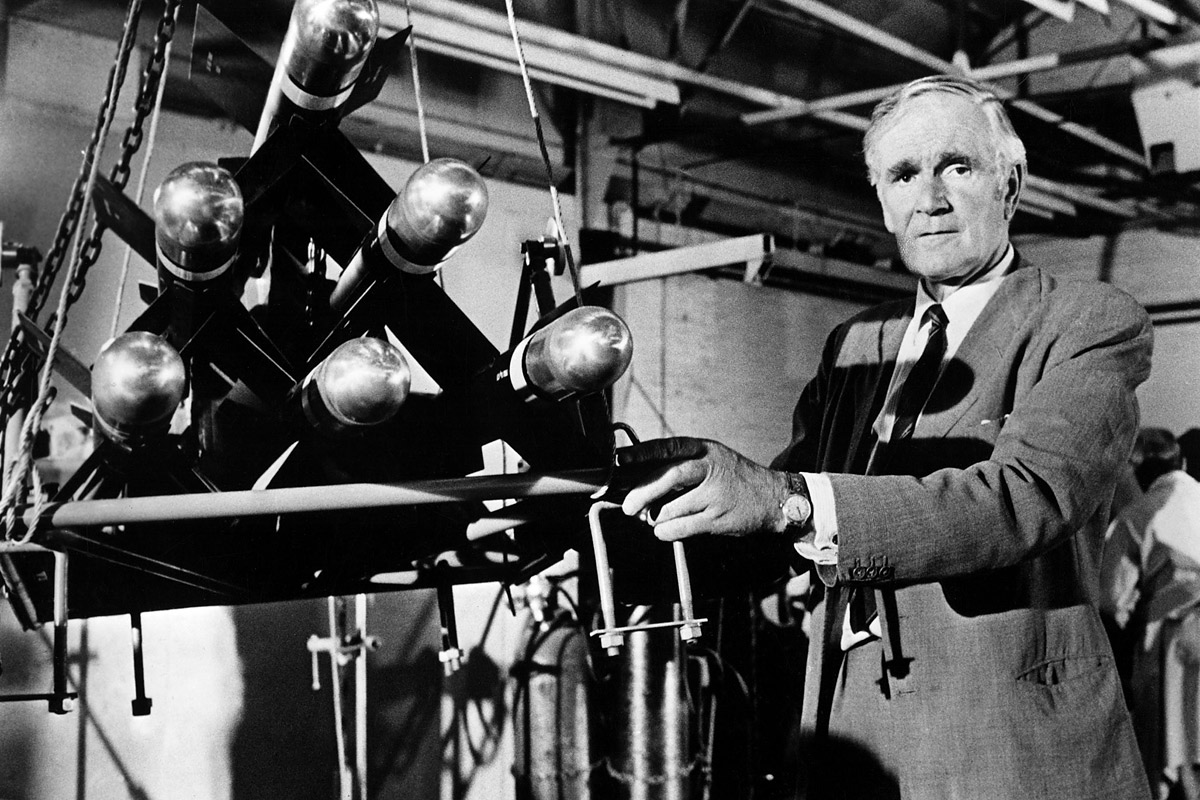
The man behind the famous Bond gadgets is called Q, for Quartermaster. (A quartermaster is the military officer who supplies troops with matériel.) In the Dr. No novel, he’s called the Armourer, but his real name — Major Boothroyd — is the same as in the movies. The character appears in almost every Bond film (he’s not in Live and Let Die, Casino Royale or Quantum of Solace) and, though Peter Burton originated the role, he was played by Desmond Llewelyn in 17 of those movies, opposite every Bond so far except Daniel Craig. After Llewelyn’s death in 1999, John Cleese played Q in Die Another Day. The actor Ben Whishaw — best known for his breakthrough stage role as Hamlet — took the part in Skyfall and will reprise it in Spectre. —Lily Rothman
Bond and The Avengers Share Cast Members
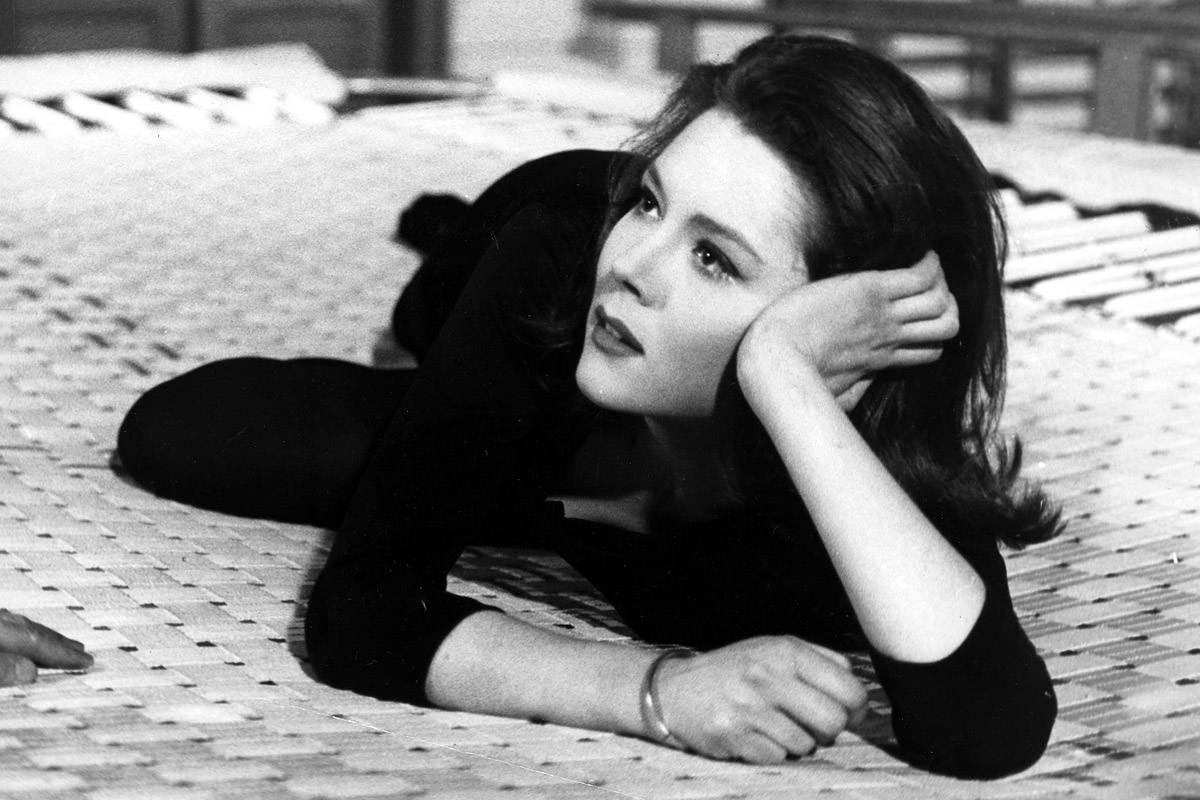
Quick — name a British spy who, through several incarnations, has carried out his missions with the help of a number of good-looking and smart female colleagues. If you said “James Bond,” you’re right — but if you said “John Steed,” of The Avengers, you’d also be correct.
The ties between The Avengers and 007 don’t stop there. All of the main stars of the ’60s TV show have appeared in Bond movies. Steed himself, which is to say actor Patrick Macnee, played Sir Godfrey Tibbett (an MI6 horse expert) in A View to a Kill. Honor Blackman played both The Avengers’ Catherine Gale and Goldfinger’s Pussy Galore; Diana Rigg played The Avengers’ Emma Peel and the ill-fated Tracy, Mrs. Bond, in On Her Majesty’s Secret Service. (If you go beyond the original TV series, there’s even more overlap: Joanna Lumley from The New Avengers was in On Her Majesty’s Secret Service, and Sean Connery appeared in the 1998 movie version of The Avengers.) —Lily Rothman
Bond Bloopers
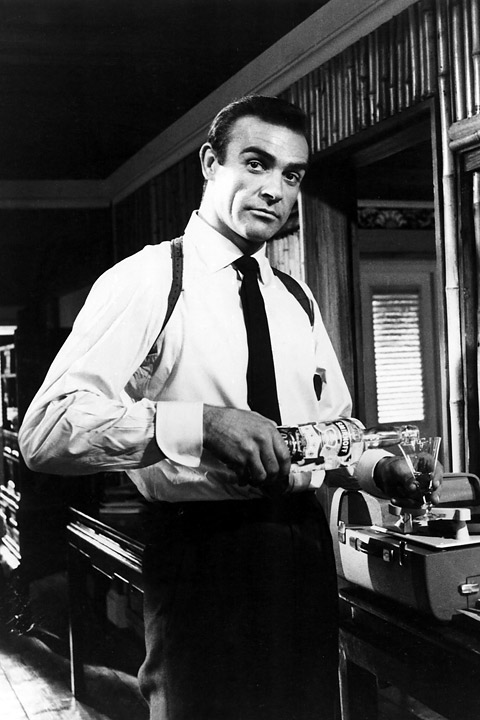
Even 007 makes mistakes — and, more to the point, even 007’s film crews make mistakes. Over the course of nearly two dozen movies, it would be shocking if there weren’t any bloopers, continuity errors or goofs. Some of our favorites are:
There’s only one Bond blooper we can’t forgive: in a Tokyo scene in You Only Live Twice, Bond is offered a stirred martini and—gasp!—he accepts. —Lily Rothman
(MORE: The cocktails of James Bond)
One Actress, Three Bond Girls
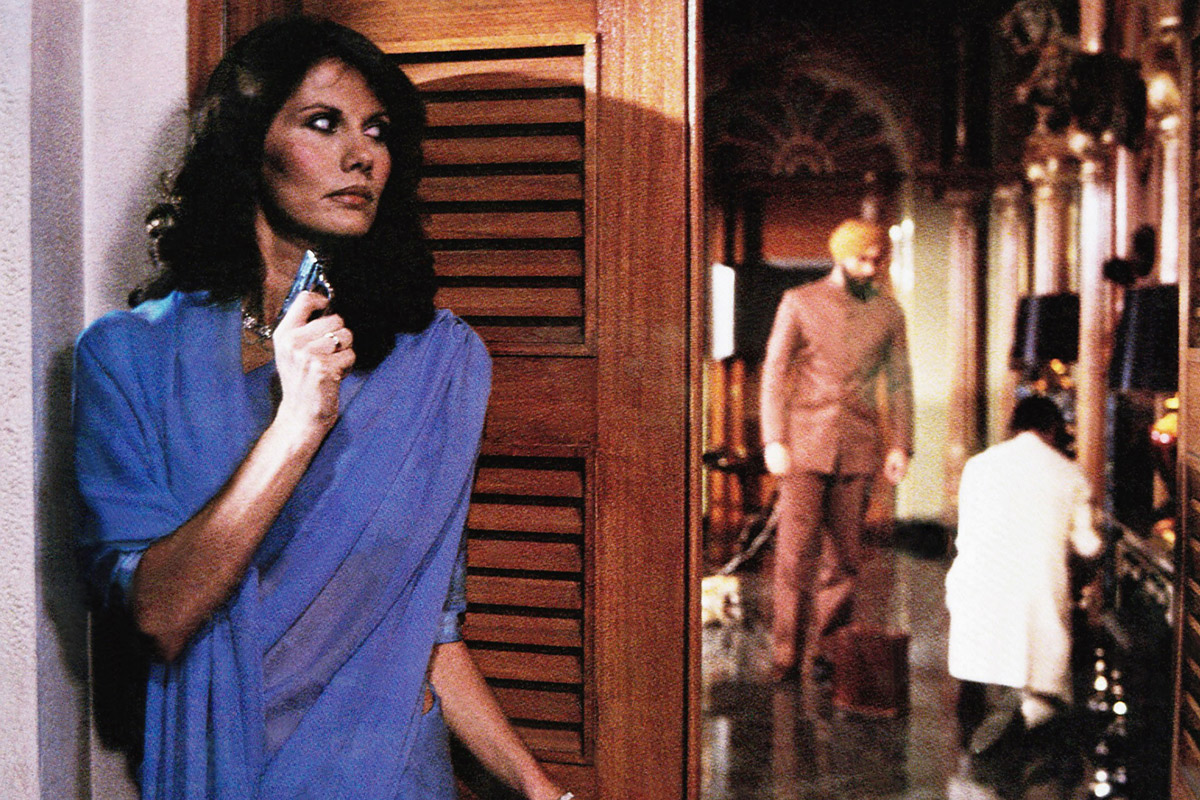
Bond ends up with a different girl in every movie, right? Well, except if that girl is played by Maud Adams. The Swedish actress is the only person to appear as two separate lead Bond Girls. In 1974’s The Man with the Golden Gun, Adams plays the villain Scaramanga’s girlfriend, Andrea Anders. Andrea turns on Scaramanga but meets a typical Bond-Girl end. (Read: death.) In 1983, she shows up again in the title role in 1983’s Octopussy, as a rich smuggler with a pet cephalopod.
And those aren’t Adams’ only Bond-movie creds, although you might be harder pressed to spot the third one without any hints. She doesn’t show up in the movie’s credits, but she’s also an extra in 1985’s A View to a Kill, playing “Woman in Fisherman’s Wharf Crowd.” One James Bond fan site claims to have located her, a little more than an hour into the movie, wearing a black suit and sunglasses. —Lily Rothman
JFK and Reagan Were Both Bond Fans
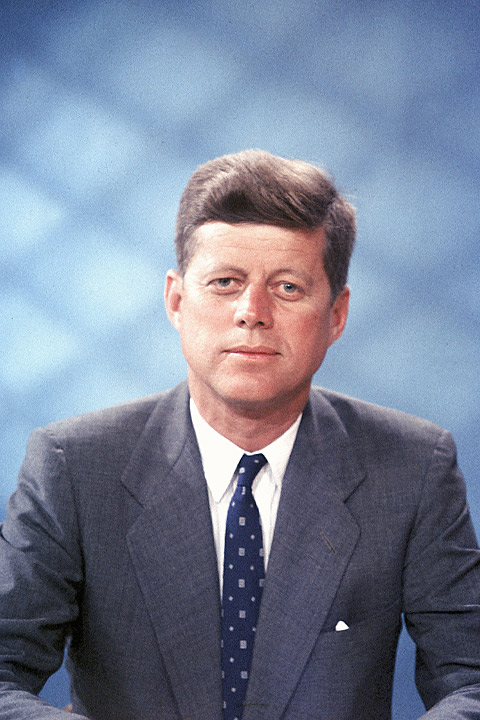
James Bond has friends in high places. President Kennedy was a fan of the novels, so much so that fans in Hyannis Port (the Kennedy summer spot) were given a shout-out in promos for Dr. No, and his public declaration that From Russia with Love was one of his 10 favorite books encouraged the producers to make FRWL as the second Bond movie.
Ronald Reagan was also a Bond fan. In 1983, he made an appearance in a TV promo for Octopussy, in which he spoke from the White House and told viewers that “007 is really a ’10’ ” and that “he’s our modern-day version of the great heroes.” But Reagan later said he thought he was appearing in a British anniversary tribute, celebrating the history of the character rather than trying to sell his next appearance. A government spokesman called the use of the President’s image “inappropriate” — but the special aired anyway. —Lily Rothman
Ian Fleming and Harry Saltzman, Real-Life Spies
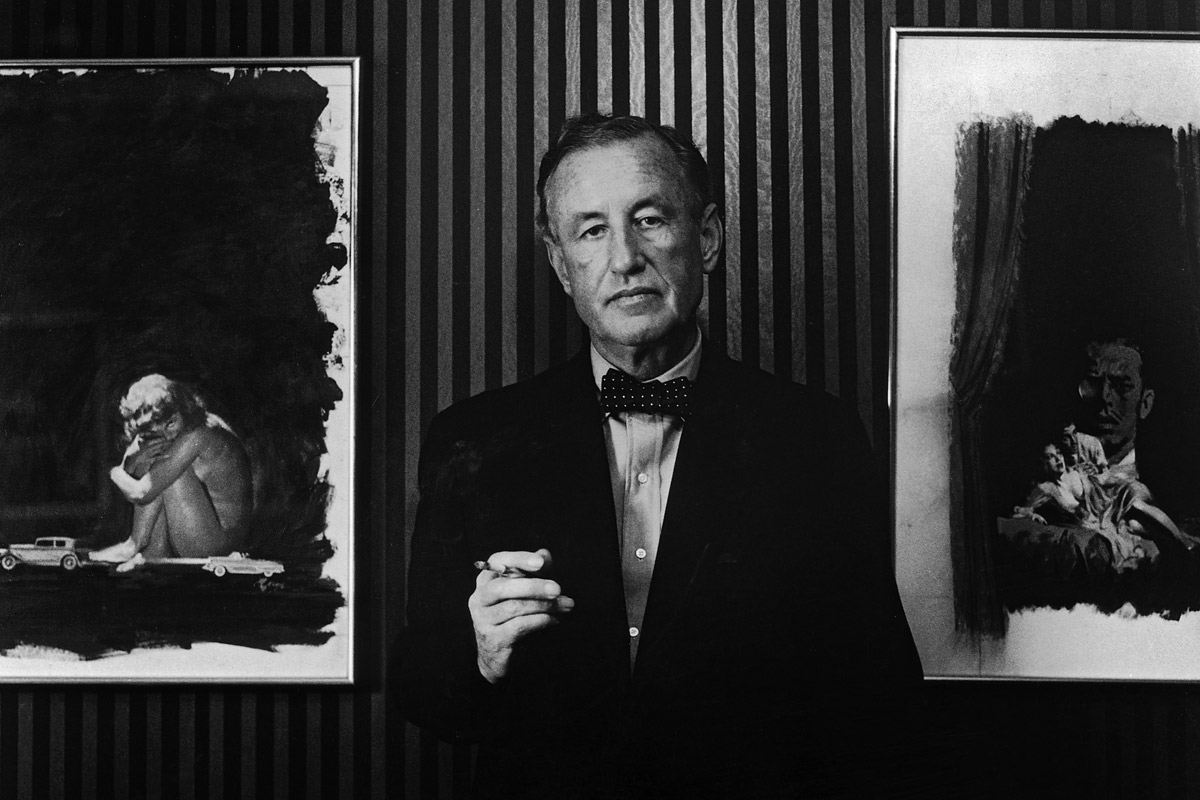
Bond creator Ian Fleming had a few things in common with his fictional character: He liked the ladies. He preferred his martinis shaken, not stirred. And he was a spy. Though he hoped for a career in the U.K. foreign office, he was turned down for a job after he failed to test well enough for placement. After a brief stint as a journalist, Fleming was recruited into naval intelligence, becoming personal assistant to Admiral John Godfrey — who may have served as one of the models for the films’ M.
Fleming wasn’t the only person associated with the Bond films to lead a double life. Harry Saltzman, renowned co-producer of the first nine Bond films, did a stint in the U.S. Office of Strategic Services (OSS), the precursor to the CIA, in the 1940s. Perhaps Fleming’s novels struck a cord with the producer, who bought the rights to his books and launched the movie series just weeks before they were set to expire. —Stephanie Abrahams
No Bond Song Topped the Billboard Hot 100 Until 1985
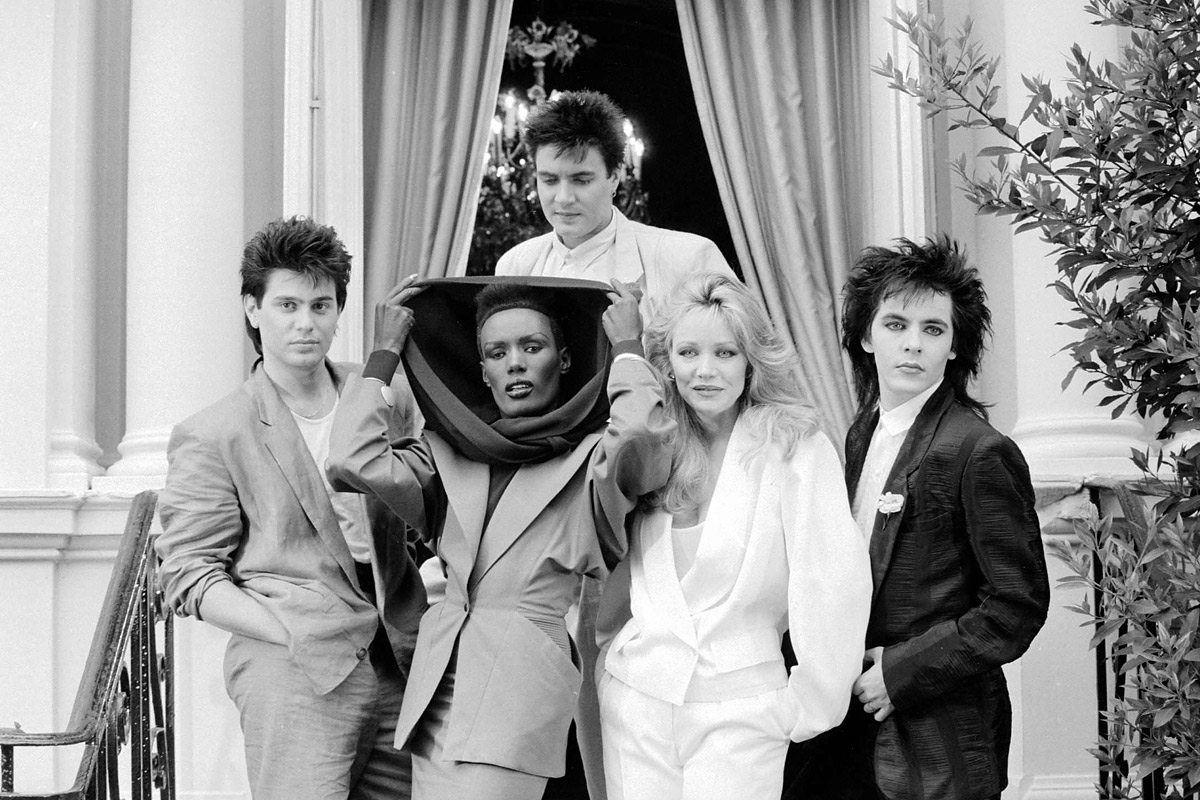
Bond movies are now famous for the songs that go along with each — and Sam Smith’s Spectre theme, “Writing’s On The Wall,” did not disappoint — but no Bond theme hit No. 1 on the Billboard Top 100 until 1985, when Duran Duran’s “A View to a Kill” finally took the top spot.
Other Bond themes to make it into the top 10 include Shirley Bassey’s “Goldfinger” (1964), Paul McCartney and Wings’ “Live and Let Die” (1973), Carly Simon’s “Nobody Does It Better” from The Spy Who Loved Me (1977), Sheena Easton’s “For Your Eyes Only” (1981), Madonna’s “Die Another Day” (2002) and, of course, Adele’s “Skyfall,” which went on to win a Golden Globe, Oscar and Grammy.
Sergio Mendez and Brazil ’66’s “The Look of Love” from the 1967 Casino Royale was also a top-10 hit. —Lily Rothman and Megan McCluskey
Other Titles For Licence to Kill
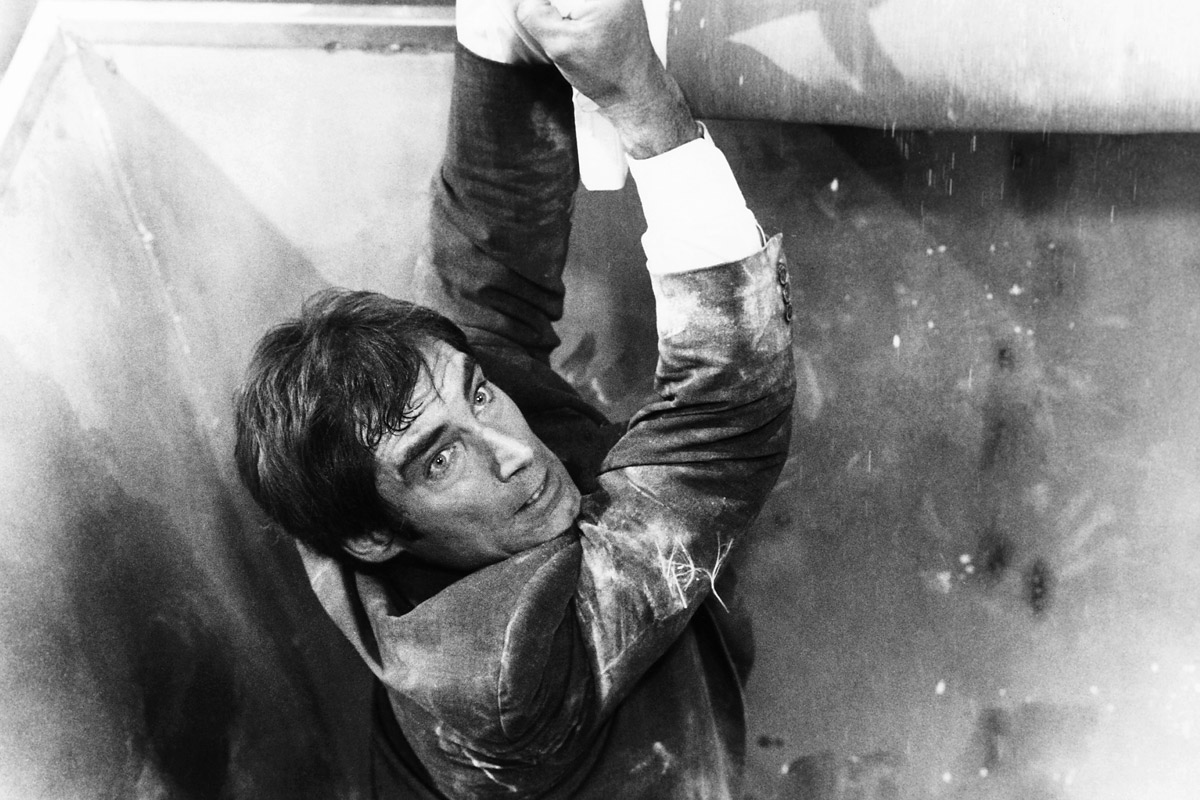
Licence to Kill wouldn’t seem to be the trickiest Bond-movie title. It hardly even needs to be abbreviated. (OHMSS and TMWTGG, anyone?) But that didn’t stop those three little words from getting in the movie’s path. The film was originally called Licence Revoked — but because polled American audiences said the phrase reminded them of the DMV, it was changed to Licence to Kill. And what about the spelling? Should it have been License, at least in the U.S.? The British spelling ended up sticking — but not everywhere. In Japan, driving associations aside, the title was The Cancelled License, and in Italy the movie is referred to as Private Revenge. Not that Italian audiences didn’t get to see a movie called License to Kill — that’s what they call Dr. No. —Lily Rothman
James Bond Is Our Third-Favorite Hero
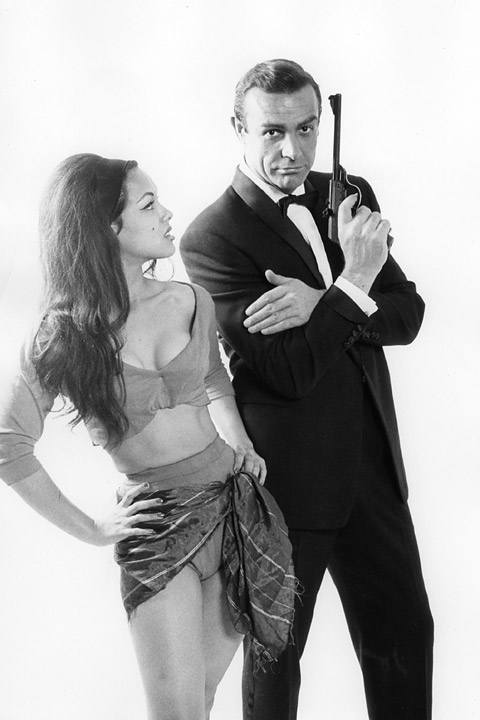
In 2003 the American Film Institute released a list of the top 50 movie heroes of all time. James Bond finished third behind To Kill a Mockingbird‘s Atticus Finch and Indiana Jones. (According to George Lucas, Sean Connery’s portrayal of the iconic spy was one of the primary inspirations for the Indiana Jones character — and a reason Connery was chosen for the role of Indiana’s father in 1989’s Indiana Jones and the Last Crusade.) —Lily Rothman
Pierce Brosnan Was Married to a Bond Girl

Pierce Brosnan had a few brushes with Bond before he slipped into the role: He was offered the part in 1986, but his Remington Steele contract prevented him from accepting it. (Interest in Brosnan as Bond actually persuaded NBC to extend the show even after it was canceled, forcing the actor to come back to television.) And one of the Bond girls in For Your Eyes Only was Cassandra Harris — who had married Brosnan six months before the movie came out. Brosnan met producer Albert Broccoli while visiting his wife on set. She died of cancer in 1991 and never got to see Brosnan make his Bond debut. —Lily Rothman
James Bond as an Alibi
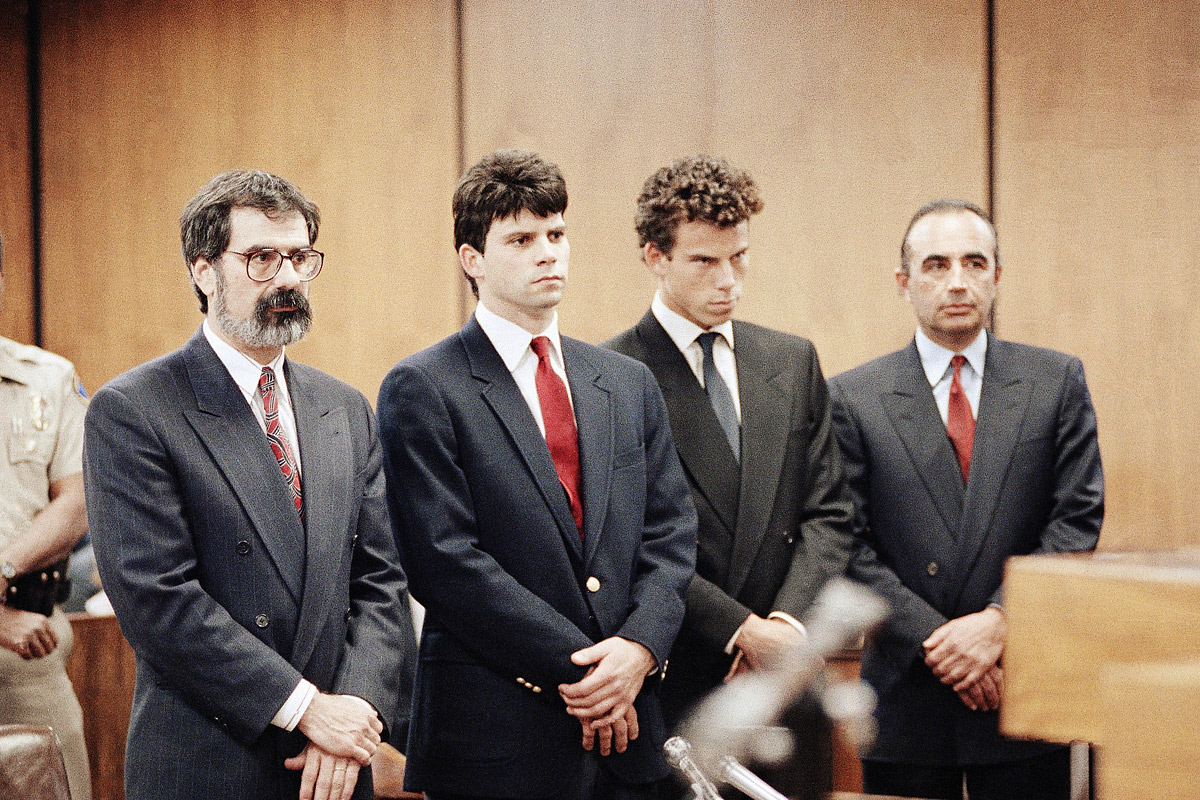
The adaptation-rights cases that have sprinkled Bond-movie history aren’t the only times that 007 has gotten involved with real-life law and order. In 1989, when Licence to Kill came out, the movie almost served as the appropriately named alibi in a headline-grabbing murder case. The brothers Erik and Lyle Menendez were eventually convicted of killing their parents — surprising them while the couple, in a coincidence, watched a Bond movie on television — in order to get their inheritances faster. That day, the brothers went to go see LTK, but it was too crowded and they were too late; they had to use Batman as their alibi instead. The idea was that the movie tickets, for a showing that started right after the killings took place, would prove they were elsewhere — but it didn’t work. —Lily Rothman
Miss Moneypenny Lives?
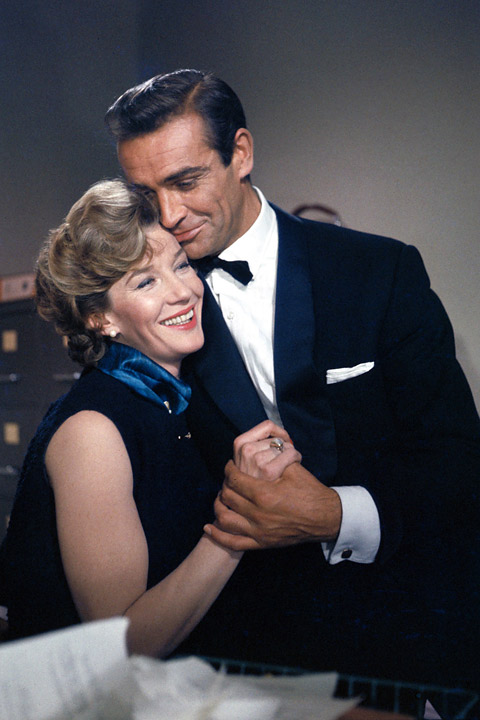
The character of Miss Moneypenny may not have been considered an actual Bond Girl, but there has always been plenty of sexual tension between her and 007. As M’s secretary, she and Bond would trade flirtatious lines — “Flattery will get you nowhere, but don’t stop trying,” she said in Dr. No — and perhaps a kiss or caress, but nothing more, making her the perfect stand-in for every female audience member who longed to live dangerously with the spy.
Three actresses have portrayed the secretary with no first name: Lois Maxwell in the films from Dr. No (1962) to A View to a Kill (1985); Caroline Bliss in The Living Daylights (1987) and Licence to Kill (1989); and perhaps the best-named actress, Samantha Bond, who appeared in four films, including Die Another Day (2002). There was no Miss Moneypenny in Casino Royale or Quantum of Solace, but actress Naomie Harris, who was cast as “Eve” (no surname disclosed) in Skyfall, was actually Moneypenny, even though she had originally denied the character was the deskbound assistant, insisting she was “a field agent.” Harris will reprise the role in Spectre. —Stephanie Abrahams and Megan McCluskey
How James Bond Changed Video Games

James Bond has always created merchandizing mania, whether he’s selling booze, toys, watches — or video games. Especially video games. One of the biggest Bond tie-in products in the franchise’s 50 years is the GoldenEye 007 video/computer game, which went on sale Aug. 25, 1997. It sold more than 2 million copies before 1998 was over, won Game of the Year from the Academy of Interactive Arts and Sciences and helped bring to prominence the first-person-shooter format. But GoldenEye 007 doesn’t take home the prize for First Bond Video Game; that honor goes to 1983’s Atari-friendly James Bond 007. —Lily Rothman
The Walther PPK: Bond’s Gun
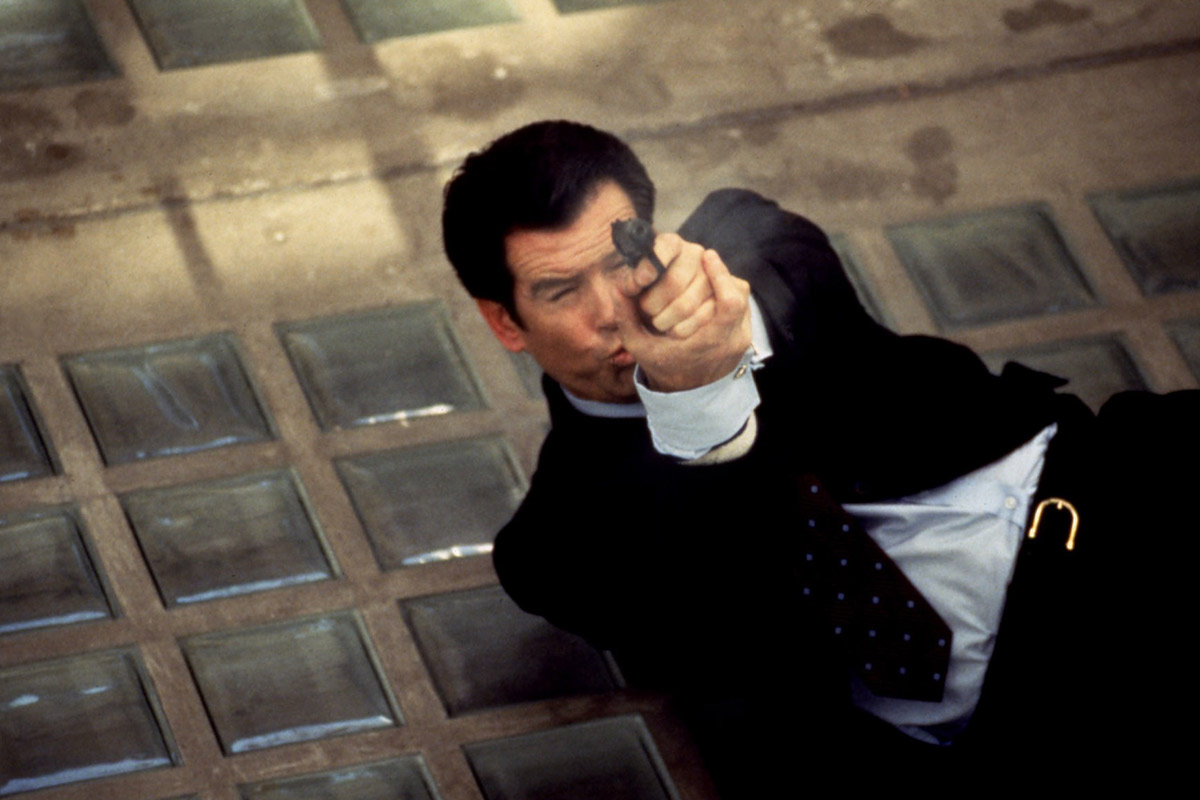
At the start of Dr. No James Bond is armed with a Beretta 418, but he ends up with a Walther PPK as his gun of choice. That’s the same gun he would go on to use through every movie until the end of Tomorrow Never Dies, at which point he gets a Walther P99. The PPK was first used by German police officers in 1931. For a 75th anniversary of the gun, Smith & Wesson, which now makes Walther guns, issued a version with a gold-plated logo and in a press release called the gun “the pistol that helped make James Bond famous.” The P99, Bond’s newer gun, has a longer barrel and a larger magazine capacity than the PPK. In Skyfall , we saw Bond going back to his roots when Q presented him with a PPK — but one that had been specially matched to his palm print so that nobody else could use it. —Lily Rothman
James … and Jack and Rose?

Just as Bond the spy has his arch-nemeses, Bond the series has its movie-theater competition. Perhaps the most daunting of all is Titanic. The James Cameron epic was already a hit abroad when it opened in the U.S. on Dec. 19, 1997 — the same day as Tomorrow Never Dies, a Bond movie with less than half the budget given to Rose and Jack. Though Titanic has made substantially more money overall — more than any other movie in American history until Avatar — TND fared well, opening to about $25 million in the U.S. versus Titanic’s $28 million.
Other noteworthy opening-weekend clashes in Bond history include Octopussy vs. Trading Spaces (June 10, 1983), Licence to Kill vs. When Harry Met Sally (July 14, 1989) and A View to a Kill vs. the epic combination of Brewster’s Millions, Rambo: First Blood Part II and Fletch. (For what it’s worth, Rambo won handily, with a $20 million opening weekend.) Spectre will have a clear playing field when it opens in the U.S. on Nov. 6. —Lily Rothman
Bond at the Oscars

James Bond is a sexy, sneaky spy — and that’s not typical Oscar bait. No biopics, no war epics, no overcoming of obstacles (well, only because nothing’s too much of an obstacle for 007). But that doesn’t mean the Academy of Motion Picture Arts and Sciences isn’t among Bond’s fans. The following Oscars have gone to Bond movies:
Sound Effects, 1964: Goldfinger
Visual Effects, 1965: Thunderball
Sound Editing, 2012: Skyfall
Song, 2012: “Skyfall” from Skyfall
And he’s been nominated plenty of times:
Sound, 1971: Diamonds Are Forever
Song, 1977: “Nobody Does It Better” from The Spy Who Loved Me
Musical Score, 1977: The Spy Who Loved Me
Art Direction/Set Decoration, 1977: The Spy Who Loved Me
Visual Effects, 1979: Moonraker
Song, 1981: “For Your Eyes Only” from For Your Eyes Only
Cinematography, 2012: Skyfall
Score, 2012: Skyfall
Sound Mixing, 2012: Skyfall
—Lily Rothman
What We Know About Bond 24

Spectre doesn’t come out in the U.S. until Nov. 6, but here are some things we know about the movie so far:
—Megan McCluskey
More Must-Reads From TIME
- The 100 Most Influential People of 2024
- The Revolution of Yulia Navalnaya
- 6 Compliments That Land Every Time
- What's the Deal With the Bitcoin Halving?
- If You're Dating Right Now , You're Brave: Column
- The AI That Could Heal a Divided Internet
- Fallout Is a Brilliant Model for the Future of Video Game Adaptations
- Want Weekly Recs on What to Watch, Read, and More? Sign Up for Worth Your Time
Contact us at letters@time.com